Black History
Month & reclaiming identity Partners · Grandparents · Siblings · Yourself!
PLUS: from childhood cancer survivor, to advocate


Month & reclaiming identity Partners · Grandparents · Siblings · Yourself!
PLUS: from childhood cancer survivor, to advocate


One-Sentence Love Story Contest, page 22
Review Blitz Contest, page 24
Photography, watercolors, charcoal, oil paintings, & more!

When Valentine’s Day rolls around, it seems like the world separates into two camps: those in relationships, and those who are not. But just because there’s an emphasis on romantic love during February, does that mean all the other kinds of love we feel for family, friends, and ourselves is moot? Of course not!
This issue has a special focus on self-love and love for all of those close to us. Also, in honor of Black History Month, we’re featuring stories about the Black experience in America. Furthermore, we know you’ve been waiting for the winners of several contests, which we shout out in this issue.

Overall, we’re so excited to start the new year off with an exciting magazine issue, and we’re looking forward to sharing a lot of cool ideas with you and your friends this year! As always, we welcome your opinions and feedback. Send your comments to editor@teenink.com! And Happy February to all!
Best,
The Teen Ink Team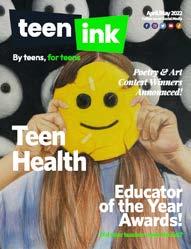

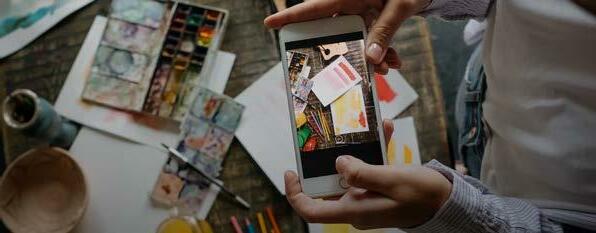

I looked into the mirror, unhappy with what I saw. I analyzed every aspect of my appearance and compared it to those of my friends. My shoulders, too broad. Thighs, too big. I used my hands to pull tight at that extra pinch of skin on my hips. I was 10. Whether in my leotard and tights, or sweatpants and a baggy t-shirt, I was always aware of my physical image. This wasn’t just a one-time experience. It occurred on a daily basis, five days a week, for 15 years. Mirrors consumed my life.
class explained how she wore the waistline of her tights pulled up to her bust to make her seem thinner underneath her leotard, and how the circle of people she told loved the idea. Another girl installed a dieting app on her phone to track her (lack of) calories. From the age of three, I had to resist the urge to fall into the trap created by the world’s stereotypes of dancers.
disciplined? Or was there a more complex explanation? The dance community not only tolerates, but encourages unhealthy eating habits. How does that expectation influence dancers who are prone to body image issues? How can one’s mind grasp onto something so destructive? Questions like these bouncing around in my head established my interest in the human
Growing up in the dance community, I was surrounded by insecure people. Eating habits and weight were topics never discussed, to a point where it almost seemed forbidden. I never questioned the silence because body hatred was normal to me. As I watched others around me struggle with eating, I found myself wondering if I, too, should be worried about whether that extra bite of pasta was truly worth it. When I was anxious, I found myself not wanting to eat. I starved myself. But after a stressful event, all I could think about was the delicious greasy burger and fries I was going to devour later. It was hard trying to find the right balance between being a committed athlete and a healthy eater.
I will never forget when a girl in my
Despite all these years of constantly battling my unrealistic expectations while still striving to nourish my body, I have learned that I shouldn’t change who I am to fit society’s standards of what a dancer should look like. My body has gotten me through all the struggles, sweat, injuries, and days when all I wanted to do was quit. I felt compelled to skip meals but was able to step out of my shoes and realize it wasn’t worth sacrificing my health to meet the unrealistic standard of beauty.
brain. The AP Psychology class I am currently taking is cementing my fascination with the subject.
Though I still continue to compare myself to others, I am finally building the confidence to find comfort in myself and who I am.
I was able to step away from the precipice. Was I lucky? More
My goal as a dancer and student of psychology is to help members of my community establish healthy eating habits at a young age. Beyond that, I want to remove the taboo of discussing food relationship issues with young dancers and young women. Every young woman I know, dancer or not, has struggled with her body image. I aspire to create a world where women do not link their success to their beauty or think their appearance falls short. I see food as nourishment, and my body as healthy and strong. Society has its opinion, but mine is all that matters.
I am so much more than my reflection in the mirror.
Eating habits and weight were topics never discussed, to a point where it almost seemed forbidden
Every young woman I know, dancer or not, has struggled with her body image
Mirrors consumed my life
Like everyone, I had big dreams. Well, mine were destroyed in a matter of months, and I had no control over it.
Some people believe in miracles, and some people think certain events happen only by coincidence. I believe in miracles, and that my life is a living miracle.

I grew up in a running family where my mother ran marathons and my father competed at West Point for cross-country and track. Running has always held a special place in my heart, and I thought it defined who I was. I even had the opportunity to compete in the Junior Olympics the summer before everything went downhill.
It was a chilly evening and I had track practice. I had 200 meters left on my 1500 meter repeats. My heart was pounding. I was so close to being done with the workout. Then, everything went blurry and my legs turned to jello. I woke up in the hospital.
Two months later, we still had no answers. After months and months of blood tests, labs, MRIs, and visiting more than 10 doctors, they told me there was nothing wrong with me. In fact, the doctors said to just take Ibuprofen for the pain. With how persistent my mother is, she continued to find new doctors who might be able to help me. At this point, I could barely even walk without pain.
the only state that could cure me. The long two-hour MRI was the most nerve wracking test, and I was terrified as my surgeon looked at the results.
“You have an extremely rare arachnoid tumor on your spine. The surgery is risky and the only other woman who had this surgery done, died on the table. However, if you don’t remove it, you will be paralyzed by next month.”
Either option left me with not being able to run anymore. The race was finished. My dreams were shattered. I broke down sobbing in the middle of my surgeon’s office.
Miracle number one then happened. My physical therapist, who also happened to be a family friend, sent me straight to Oregon Health and Sciences University after working on me for only five minutes. OHSU is the only hospital in the world that could have discovered what was happening to me. Miracle number two — strangely enough, we had just moved to Oregon and were originally supposed to be stationed in Germany instead. We moved to
“Mom, I can’t get this surgery. I won’t make it out, there’s no possible way.”
I had lost all faith that I could ever finish the race. Everything that had ever made me happy was taken away from me. My mom saw it in a positive light and made me get the surgery. I still said goodbye to my whole family, thinking I would never make it out. The last thing I remember is the smell of my mom’s perfume and the sight of my twin with tears streaming down his face.
I still said goodbye to my whole family, thinking I would never make it out
I woke up in my hospital bed, alive. Miracle number three. The doctors have no idea how I made it through, as the tumor was bigger than they previously thought. My vertebrae were now metal, and my body was no longer my own. My scar was so horrendous to look at. I hated myself.
Four months not being able to walk, four months not being able to even use the bathroom. The nurses pitied me; they brought in a new
month, my nurses tried to get me to walk. I couldn’t even get out of bed.
therapy dog every day and talked to me like I was a 10-year-old. I didn’t even recognize myself in the mirror. I bawled my eyes out every single night, while my parents slept soundly on the couch next to my hospital bed. All I wanted was to feel normal again, and to run again. There was a little boy in the room next to me — leukemia — and he was a ray of sunshine every morning. I needed him, but I didn’t know it. In my fifth
“McKenna, you’re doing so good. You have made so much progress already.”
No, I haven’t. If I can’t even walk, how will I ever run again?
The little boy ran up behind me. “Kenna, it’s okay to not be strong,” he exclaimed. He was six.
Running to the finish line was not something I ever envisioned for myself after this surgery. Every time I got close to the end of the race, I would collapse all over again, just like the day I found out. It has now been three years since the day I got surgery. The end of the race still isn’t even in sight, but I can run toward it now. The pain I feel, the constant check ups to see if the tumor is back, the neverending lab results that never look good — it all holds me back from the finish line. My faith in miracles hasn’t changed. I believe my life is a miracle.
Some people don’t believe in miracles. Not explicable by scientific laws, a miracle is considered to be a surprising event and therefore is considered to be the work of a divine agency. There was absolutely no medical way that I could have made

it. The doctors have no idea how I can run. They have no idea how I am so content through the pain I endure on a daily basis. Living in chronic pain often always leads to depression — but not when you have faith in a higher power. My faith in God got me through the hardest trials of my life. While miracles might seem made up to some, it has defined my life. I was even born three months early — with the tumor. I had this tumor on my spine for more than 16 years, and it’s just a coincidence that we found it a MONTH before it could have killed me? We happened to live in the one state with a hospital that has experienced this type of tumor before — when just weeks before, my dad decided to not go to Iraq again, leading us to retire in Oregon. I was on the path to run in college, to run professionally like my dad. Just like in a marathon, there are aid stations along the way: OHSU was my aid station to get me to the finish line. While I’m nowhere close to being completely healed, I know I will continue to see miracles and I can now help others who are running to the finish line.
ARTWORK BY ELLA HEDGES, DAYTON, OHMy vertebrae were now metal, and my body was no longer my own
1 ARTWORK BY SMRITHI SUDHARSUN, EDISON, NJ

2 ARTWORK BY ANONYMOUS
3 PHOTO BY EVIE DAVIS, WEBSTER CITY, IA



Growing up, I always heard my grandparents say that when people died, their souls would rise and become stars in the sky, guarding us on Earth.
Later, my grandpa passed away because of lung cancer, leaving my grandma alone. Since then, grandma would sit outside in the courtyard every night, gazing at the sky. There were times I would sit next to her, and she would tell stories about Grandpa.
"Did Grandpa become a star in the sky?" I asked.
"Yes," she said, "the brightest one is your grandfather." I tried to argue, but I could not bear to. After all, it was a delicate dream that my grandma had. Beautiful, yet unreal.
Following Grandma's death, my family stopped going back to their hometown and moved to the city, where no stars were visible.

Last year my family took a trip to Tibetan Plateau, a high-altitude plain where the stars are bright. At night, the scattered moondust in the sky was sparkling and shimmering. The deep blue canopy was covered with thousands of pinpricks of cold light. I noticed two glowing stars wink at me. From nowhere, melancholy started filling the empty part of my heart, taking me back to when my grandparents were sitting next to me, retelling their childhood stories. Tears streamed down my face while I stared at the stars, twinkling and dazzling, beautiful and unreal.
ARTWORK BY KYLIE BROOKSHIRE, MIDLAND, TX
Our story starts as kids, our entire universe revolving around fantasies and the constant fear of contracting cooties. Young and naive children, who were unfazed by anything in this world. Unable to be swept up in the whirlwind that blew around the adults of our time.
Next thing I know, puberty is upon us. Changing physiques, our bodies overrun by hormones, and the sudden urge to run up to Bobby down the hall and say, “Sara has a crush on you!” Suddenly, the disgusting opposite sex wasn’t so disgusting anymore. When all of that changed, we changed. I lost my childhood friend as he had morphed into someone I didn’t recognize …and so had I.
Three years later, we had changed again. This time, it was a different change; not hormonal, but societal. When going through high school, teenagers are taught
to just blend in. Because if nobody notices you, nobody can target you. And if nobody targets you, you just might be able to survive the four-year hellhole that most people don’t end up missing; but that wasn’t what I was worried about missing — it was him, my childhood friend, the one I never thought I would live without. We must have blended in too well, as we could no longer recognize one another.
It’s funny how life works. So many people pass by every day, hundreds of faces that our brains try to place, only to end up remembering just a few. Mine chose to remember his. And there are points in my life where I wish I could just forget — remove the image of ever knowing him, as I now realize I will never see the same boy who belonged to that face. Still, that doesn’t stop my heart from hoping that one day, I will look among the crowd, and see that same little boy I once knew. Maybe then I can finally tell him, “I’ve missed you.”
...that doesn't stop my heart from hoping that one day, I will look amongst the crowd, and see that same little boy I once knew

The sun is setting, the lights are getting brighter, smoke fills the stage, and thousands of teenage girls are screaming as they have waited months for this moment. It feels like I’ve been standing here, waiting forever. My anticipation reaches its peak, only to be interrupted by the speakers blasting as my favorite band walks on stage. The screaming is only getting louder; I can barely hear what song is playing. My sister and I turn to look at each other, smiling and crying, knowing it was worth waiting years to experience this exact moment together. We can’t believe four of our favorite people are actually real and standing right in front of us. I start to open my eyes, holding my concert ticket, as I snap back into reality. Every time I look back at my concert ticket, it brings me back to the happiest day of my life.
It is a Thursday afternoon in the middle of July. The sun is painting the sky pink and orange. There is a breeze heavy enough to blow my hair over my shoulder. The bass from the speakers is so loud that it feels like it is pumping through my body. My sister stands in the middle between me and her boyfriend. We are surrounded by thousands of complete strangers. Everyone in the arena is separated from each other by many rows with specified seats for each person. Behind me, there is a wide concrete path dividing my seated section from the lawn section. Even though I am surrounded by strangers, I feel the most comfortable I have ever felt, due to the vibes shared amongst all of us. Each person is standing up as tall as they can, trying to get the best view possible. This makes it hard to see, causing constant movement left and right in the crowd.
As the last note of the final song is played, everyone starts screaming as loud as they can. Each member of the band makes their way to the center of the stage, placing their arms behind each other’s backs. Their unsynchronized bow only encourages the screams to get louder. Disbelief runs through my body as I try to comprehend the past two hours of my life. Each band member takes their own path to head off the stage, waving goodbye to all of the fans. Tears start to run down my face once again. A handful of people quickly make their way to the aisles, trying to beat the traffic. I am not a part of that group. My feet feel like they are cemented into the ground. I don’t want to leave just yet — I am staying in this moment for as long as I can.
Memories are flooding my brain on the two-hour drive home. My eyes are getting heavier every second, due to the built-up exhaustion from a long day. Light raindrops hit the front windshield, making peaceful noises. I fight to stay awake, but I am too weak to hold my eyelids open. For what has felt like five minutes is actually two hours. My sister parks her car in the driveway for me to get out. I sluggishly grab my bags from the back seat and make my way inside the front door, still half-asleep. My energy
decreases with every step I take up the stairs. I turn the light on as I walk into my room, but it is too bright for my eyes. My immediate reaction is to blink quickly to try to readjust. All I want to do is toss myself into bed and fall back asleep. I slowly crawl into bed and lay my head on my pillow. Even though I feel like I could sleep for 12 hours, I can't help but grab my phone from my pocket to look back at videos from the night. I find myself smiling and softly singing along to every word of every song. As I swipe to the last picture, I look at the clock and it reads 4:15 a.m. I set my phone down because I can't believe I let myself stay up this late. Before I even had time to wrap myself in a blanket, I was out for a good night’s sleep. If I was told at 10 years old that my sister and I went to a concert and had arguably the best night of our lives together, I wouldn’t have believed it. My sister is someone I wasn't very fond of when I was younger. As we grew up, we matured, and we developed a stronger connection with each other that I don't have with anyone else. Everyone calls us twins, though we were born four years apart. Not only do we look alike, we act as similar as twins do. She may make jokes in almost every situation, but deep down she really does care for what I have to say. Throughout my middle school years, she was the person I could always depend on, my rock. No matter what I ask her to do, she will try to find a way to satisfy my wants. I don't see her just as my sister, but as my best friend, too.
I owe the best night of my life to my sister — she was and still is my role model. If I didn’t want to be like her when I was in middle school, I never would have been a fan of the band we saw in concert together. I would secretly listen to a select few songs from the band just so I could sing along with her if she played them when I was around. The night of the concert isn't only a good memory because it was my first concert, but because it reminds me of the connection and love I share with my sister. I am forever grateful that we overcame our hatred for each other as kids. We matured into young adults and realized that we have each other as built-in, lifelong best friends.
THE NIGHT OF THE CONCERT ISN'T ONLY A GOOD MEMORY BECAUSE IT WAS MY FIRST CONCERT, BUT BECAUSE IT REMINDS ME OF THE CONNECTION AND LOVE I SHARE WITH MY SISTER
Wake up. Look in the mirror.
You notice the shine in your eyes and you notice your hair looking flowy.
Your skin looks clear and fresh.
You have your mom’s height and your dad’s nose.
You are a combination of the people you love the most.
You love yourself. Today’s gonna be a good day…
Enter the school. You feel good at first. You see other students
And all the sudden, all you see are your flaws.
You are not small enough. You are not graceful enough. You are not normal enough. You are not friendly enough.
Get on the bus to go home. Open Instagram.
You have 93 likes. Scroll further.
Your best friend has 376 likes.
Staring at the likes, you think to yourself,

“Does this mean no one likes me?”
You get home, and you turn on the TV. “Aladdin” is on. Great.
But for the first time, you stare at Jasmine. You see her body.
You think to yourself, “Why don’t I look like Jasmine? Why don’t I look perfect?”
You finish your homework. You see kids playing outside. Join them.
They invite you to the pool. You agree.
But when you get there, you see all the kids in swimsuits.
You realize you look different than them. Again, you think,
“Why don’t I look like them, Why don’t I look perfect?”
Walking back home, you are exhausted. You want to go to sleep and pretend nothing happened.
You lay in bed, once again looking at other people’s Instagram posts. Your mom comes in, and tells you to get off your phone.
She hugs you and says, “Good night, you are so beautiful.”
She leaves. Thinking about what she said, You remember,
You have your mom’s hair and your dad’s smile.
You are a combination of the people you love most.
You realize you are beautiful. You are you. Everyone is different.

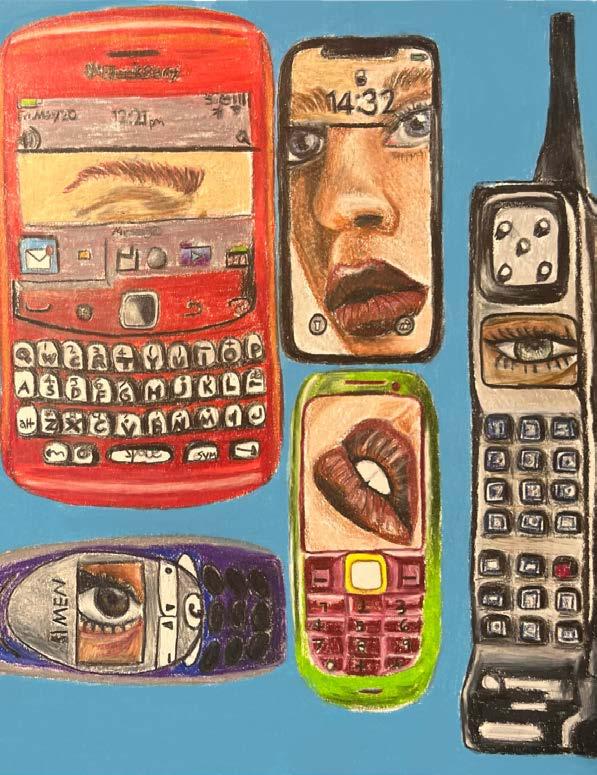
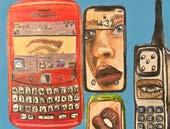
For as long as I can remember, strangers have been telling me how beautiful my freckles are or how they wish they had freckles like me. Even as a little kid, I never believed that people really thought these little spots on my face were cute. I have always noticed that I stand out compared to everyone else’s bare and smooth faces, and it made me jealous.
The amount of times I’ve looked up home remedies on how to get rid of freckles or how much makeup I have put on to try to cover them is endless. Even more recently, with the henna trend, in which people give themselves faux freckles, I find myself wondering why anyone would want to purposely have them. This idea of people wanting freckles always baffled me, until I finally started thinking of them as a blessing instead of a curse.
Standing out is always something I have been too afraid of, but with people always commenting on my biggest and most prominent insecurity, I started evaluating why I don’t like my freckles. To me, they always seemed like something little kids had that made them cute. Growing up and still having them made me feel alone because there was nobody else with them.
I remember the day my entire thought process changed, and I began to realize that my freckles really are as beautiful as everyone kept telling me. I was on Instagram
embracing her natural beauty. After scrolling through her feed for a while, I saw she had tons of videos with natural or no makeup at all,
looking at makeup artists when I saw Mari Maria. She was the first makeup artist and influencer in general that I had ever seen who has a face like mine. People with freckles are not portrayed in the media as much, so it was refreshing to see a beautiful woman with a massive following who I could relate to.
Before even checking the comments, I knew they would be filled with people telling her not to cover her face with makeup and to let her natural beauty shine. People did comment on those things, but she never listened to them. She just kept doing what she loved while still
showing that she was comfortable in her own skin. Maria was very eye-opening to me as she was the first grown woman I have ever seen with freckles and the confidence to show them off.
She made me realize that freckles are nothing to be ashamed of, that they are in my genes and make me special. They are a beautiful feature and I am happy to stand out from the crowd and embrace them now. Just because freckles are not the standard of beauty, doesn’t mean they are not beautiful. Rather than being offended when people put on fake freckles, I am flattered to see that they find beauty in what I was once insecure about.
FRECKLES ARE NOTHING TO BE ASHAMED OF. THEY ARE IN MY GENES AND MAKE ME SPECIAL

 ARTICLE BY CINDY NIE, SHANGHAI, CHINA
PHOTO BY ELENA ZHANG, WALLINGFORD, CT
ARTICLE BY CINDY NIE, SHANGHAI, CHINA
PHOTO BY ELENA ZHANG, WALLINGFORD, CT
As a young girl, I was never camera shy. In fact, I loved the sound of the “click” when the camera flashed. Whenever my mom pulled out a camera, I would rush in front of the lens and strike a pose. As a first child, my parents had pictures of me pinned to the walls, placed over countertops, and even made into little key chains. My mom, a lover of arts and crafts, also organized my pictures inside these thick photo albums. I was a chubby child. I had plump cheeks, and when I wore T-shirts, my stomach slightly stuck out, but none of that mattered to me. I didn’t care what I looked like; I just knew I liked being in the spotlight. However, those photo albums grew thinner as I progressed through middle school, and now, in high school, my mom has completely abandoned that hobby.
Every time she pulls out the camera, it’s the start of an argument. It goes something like this:
“MOM, I am telling you now for the 100th time, please do not take my picture without my permission.”
After making my statement, she starts “lecturing” me about the importance of capturing memories and always ends her argument with, “You will regret this.”
I nodded, but what I murmured under my breath was, “Why can’t you respect my personal opinion?” However, it was more than just a matter of “personal opinion.” I knew I did not like the attention of the spotlight because I was not confident in my appearance. Every time I look at a picture of myself, all I see are flaws. But at the same time, I cannot put my finger on what exactly those “flaws” are. All I know is that I am not tall and slim, or have desirable curves. I do not have a head of glossy hair or a face with chiseled, high cheekbones.
Most importantly, I do not fit into the societal standards of “beauty.” Because I did not fit into these societal molds, I felt unworthy and insecure.
It was not until my mom asked me one day how I would define beauty that I was at a loss for words. I did not have an answer because I had never asked myself that question; it did not occur to me that my opinion mattered, too. We rarely think of beauty as something we define for ourselves; instead, it is always about how “others” see me and how “society”
deems me. From a young age, I was never one to let others dictate how I feel, but why did I let myself fall into such a trap when it came to my appearance? It is my body and my face, but I let other voices shame me and tell me I am not good enough. My appearance was like an outer shell that hid me from the spotlight and crumbled at someone else’s touch. I look at pictures of my younger self and see the smile and confidence that I lost. I realized my mom’s words that I tried desperately to battle were true. I lost moments in my life because I chose to hide behind the camera. I want to reclaim the power over my appearance. I may not fit into the societal standard of beauty, but I appreciate my body and all it has done for me. I do not need perfection, because I am enough for me.
We rarely think of beauty as something we define for ourselves; instead, it is always about how “others” see me and how “society” deems me
Behind his closed hands is a heart that beats just for him.






 BY FINN HUTTON, GELNDIVE, MT
BY FINN HUTTON, GELNDIVE, MT
She was afraid of what was to come; so he lit a candle for her to see.
BY AVA ELY, WEBSTER CITY, IA
You are my entire story, but I’m just a footnote in yours.
BY NADIA BOLLINGER, BOTHELL, WATo the person writing my story, keep her in it as long as you can.
 BY GABBY WOIDA, HARTLAND, WI
BY GABBY WOIDA, HARTLAND, WI
I would have set my world on fire just to hear you laugh again.
BY ELENA ZAGANJORI, ARLINGTON, MAMaybe he was falling to his death, but it didn’t matter because he was falling for her.
BY ANONYMOUS

 by Neil Gaiman
Review by Soeun Lee, Tenafly, NJ
by Neil Gaiman
Review by Soeun Lee, Tenafly, NJ

The Graveyard Book is a book that’s completely deserved to win the Newberry Prize. This book is about a boy named Nobody, and by following his journey through life, it touches on both good and evil and the borderline between life and death. This book is also filled with irony in how someone has been intending to kill Nobody, but at the same time, Nobody’s becoming closer to the graveyard (death) and treating it like a home when it’s where the dead go.
My favorite quotes from this book were, ‘”I want to see life. I want to hold it in my hands. I want to leave a footprint in the sand of a desert island. I want to play football with people. I want”, he said and then he paused and thought, “I want everything”’ and in addition to that, I loved, “People want to forget the impossible. It makes the world safer.” and
“But between now and then, there was life and Nobody walked into it with his eyes and heart wide open.” These quotes are so sweet and easily my favorite in the text.
This writing was, again, one of the best I’ve ever seen and I’m not surprised that it got several awards. The combination of irony and seriousness is exquisite and the whole story was well-structured and eloquent. There were many themes hidden and touched up in this masterpiece. The main theme I’ve thought of is how the dead are so peaceful and calm while the living is bitter, yet, every living person doesn’t want to die. This book represents the meaning of why the living doesn’t want to die.
Additionally, there were many symbolic aspects in this story. For example, the white flower in the book symbolizes that death can come at any time. The graveyard is symbolic of Nobody’s “chosen” family. It also includes the common thoughts that life and death have. In The Graveyard Book, the winter blossoms are given to each living person in the city, which also symbolizes life and death.
If you read the book, here are a few more questions to keep in mind:
1) What do you think the living and the dead have in common?
2) Why do we have a longing for something?
I strongly advise you to read this book
because it is truly one of the best books I have ever read.
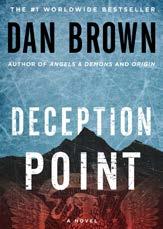 by Dan Brown
by Dan Brown
This standalone book, Deception Point, was extremely unique. I would have never expected such a piece of art from Dan Brown — he really defied the expectations this time.
The three factors that make any book, or any piece of writing interesting. This book was the epitome of interesting. Dan Brown plays his words well, I must say. Sliding the truth into his simple ambiguity seems effortless for this award-winning author. Therefore, I
grant this book five stars!
For me, what I absolutely loved was a tiny, insignificant paragraph — a paragraph about bioluminescence. I’m infatuated with bioluminescence; it heightened my reading and my interest in Dan Brown’s work.
This book, in a nutshell, was a game-changer. Dan Brown continues to remind us about how much we have to learn.
same gender, they probably are two totally different people. In Twins, that is exactly how these siblings are. Starting middle school, they face a lot of problems, including both of them running for student council president. Who will win and who will be the less popular sister?
This graphic novel was pretty good. I read it in a couple of hours, and I read it twice! Occasionally, I got bored with all the fights, which isn’t like real siblings. I have two brothers and we are incredibly close, and an hour after we fight, we always end up hanging out again. On the other hand, I love how different the two girls are; one twin is extroverted and the other one is more reserved.
Between all of the friend breakups, my favorite character is Maurine — the more introverted twin. She is the most relatable character, especially to me. I have been in middle school for three years and I still spend most of my time in the library. Though running against her sister was a little mistake, I respected her decision of stepping out of her comfort zone.
by Varian JohnsonIn your lifetime, you have probably met twins. They could be two girls, two boys, or maybe even a boy and a girl. Whether or not they are the
On a scale of one to 10, this comic was probably an eight. I did not predict the ending at all and I loved all of the characters. Personally, I would have liked it if the brother was more protective. All he did was pretend, but his character would have been so much better if he truly was protective and gave more support to Maurine.
If you want a quick book to read, I highly recommend Twins. It is hilarious and has small mysteries. All of the characters are well written and the illustrations are immaculate. So what are you waiting for? Go read it!
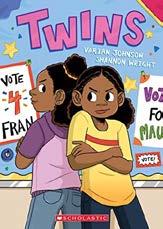
“I wanted nothing more than my mother’s happiness. For what kind of man would I be if I did not help my mother? If I did not save her?”
The Academy Award-nominated film “The Power of the Dog,” directed by Jane Campion, opens with a narration by frail and unassuming Peter (Kodi Smit-McPhee). Peter’s words are more than an introduction to his character. It introduces the film’s underlying motif: What does it mean to be a man?

The film, nominated for Best Picture, Best Original Score, and 10 other categories at the 94th Academy Awards, is based on a 1967 novel by Thomas Savage. It revolves around Phil Burbank (Benedict Cumberbatch), his brother George Burbank (Jesse Plemons), and new wife Rose Gordon (Kirsten Dunst) and son Peter in 1925 rural Montana. For decades, Phil has raised cattle
alongside his brother on their family’s Montana ranch. From the beginning, however, it is clear that the brothers have stark differences. Phil is controlling and brutal, while George is a kinder and gentler soul. The relationship between Phil and George changes when George marries Rose, a widow with a teen son. Rose and her son, Peter, come to live with Phil and George on their ranch. Phil, though, views Rose as an intruder in his relationship with George and sets out to psychologically torment her. As a result of Phil’s malevolent behavior, Rose’s mental health begins to decline, drawing Peter into the picture as his mother’s protector. On the surface, “The Power of the Dog” is slow and drawn out. It hardly moves temporally and spatially, but there is tremendous depth in each of the relationships between the film’s main characters. The highlight of the film is the exploration of Phil and Peter’s
characters. Phil’s macho exterior masks a longing for companionship, and Peter’s effeminate mannerisms hide his deeper cunning. As their relationship progresses, different sides of each character are revealed, leaving the viewer unsettled.
Cumberbatch and Smit-McPhee deliver impressive performances, both portraying their characters in strikingly cogent ways. Each manages to cohesively integrate ideas of masculinity and femininity
The film explores the nuances of relationships, and challenges stereotypical views of what it means to be a man
within their roles, making the actions they take as the film progresses even more nuanced.
“The Power of the Dog” tells a seemingly cliche story about becoming a man, but instead of the mentor-mentee relationship that Phil, and viewers of the cowboy western, expect, Campion flips the trope on its head. The extent of Peter’s manipulation to protect his mother is not revealed until the end. Adding to the acting are layers of parallelism that Campion masterfully inserts, which both captivate and add to the brilliance of the film.
The ensemble of piano, strings, winds, and brass composed by Jonny Greenwood is a dark and disturbing score, which adds to the viewers general feeling of unease. One is intensely aware of the changes in music as it hints what the next scene will be, and the music only compliments the visual elements, without overshadowing other aspects of the film.
The cherry on top is the scenic landscape the film’s cinematography spotlights. Although the story is set in Montana, “The Power of the Dog” was shot in New Zealand. Cinematographer Ari Wegner perfectly captures the emotions each scene in the film evokes with the alternations between landscapes of lush grass and crystal blue ponds, to dark, shadowed hills and jagged cliffs.
Although chilling, “The Power of the Dog” is a cleverly crafted film with each element — the storyline, acting, and cinematography — working in perfect harmony. The film explores the nuances of relationships, and challenges stereotypical views of what it means to be a man. The motifs together with its superb execution make “The Power of the Dog” well deserving of its 12 Oscar nominations.
Horror movies are exciting, suspenseful, and provide adrenaline rushes to the viewer — all of which make this genre of movies so addicting. Fans go for the fear, the jumpscares, and the thrill of these movies.
Prior to watching this movie, I had very high expectations. The creators of “Smile” did an amazing job with the trailers and advertisements that showcase the sinister smiles, gore, and jump scares. While the trailers advertised this horrifying masterpiece of a movie, the final film failed to reach these expectations by a drastic amount. The jumpscares were unfulfilling, as they were merely people smiling with a loud sound effect. The scares were also poorly timed and not at all frightening.
“Smile,” a 2022 psychological horror film, starring Sosie Bacon, focuses on a therapist, Rose, whose job is to consult with a hysterical patient.

This patient claims to see haunting smiles everywhere after witnessing a terrible suicide days prior. During this consultation, the patient commits suicide, and then Rose starts to experience similar disturbing and unnatural smiles. I believe that horror films should have a complex plot — one that
leaves you thinking and scared for hours after seeing it. “Smile” was just the opposite. Instead of the fast-moving plot that many movies have, “Smile” took its time to write out the plot and gave too much background information, instead of jumping right in. Though this could be viewed as a positive feature, I found that after a while it was very unnecessary and boring.
Not only did the beginning have a slow pace, but the end did as well. The final scenes of “Smile” were very rushed, and the movie ended just as quickly as it started. The whole of the movie did not piece together as I thought it would. And don't get me started on how ridiculous the ending was. There was a huge mood shift that came out of nowhere, and it took a moment to get past the disbelief and disappointment that the whole movie led up to.
Due to the lack of a complex plot and jumpscares, I did not experience any adrenaline rushes or feelings of excitement, which is what I look for in horror movies. That being said, “Smile” lacked many of the aspects a horror film needs to acquire for it to be enjoyable. The film had me leaving the theater unsatisfied, longing for a better plot and better jumpscares.
I believe that horror films should have a complex plot — one that leaves you thinking and scared for hours after seeing it.
“Smile” was just the oppositeBy Ben Parker, South Burlington, VT
With “Blue Velvet,” David Lynch has surely created one of his career’s most bizarre paradoxes. Even compared to later shockers like “Wild at Heart” and “Lost Highway,” it perhaps tops the list of this filmmaker’s edgiest, scariest cinematic nightmares, to the point where certain parts may be downright unwatchable for some. Just as arguably, however, it’s the very finest gateway into one of cinema’s most distinctive visionaries.
Understandably, Lynch fans may argue that “Mulholland Drive,” a more universally well-received Hollywood noir starring Naomi Watts, is just as recommendable for the uninitiated, but it does ultimately require a greater patience for confusingly nontraditional storytelling. “Blue Velvet” isn’t really as experimental, yet despite rewarding more adventurous
viewers, a very strong stomach is necessary. No matter what unforgettable images Lynch sears into your mind, though, you won’t be able to look away.
All the unhinged, unnervingly dream-like weirdness expected from this director is certainly present here, but it’s firmly anchored in a narrative easy to keep track of, yet creepily mysterious enough to linger long after it’s over. Retreating from Hollywood after 1984’s “Dune” flopped (not to be confused with Denis Villeneuve’s “Dune” from 2021, a far more critically and commercially successful adaptation of Frank Herbert’s acclaimed sci-fi adventures), Lynch carefully ensures his trademark surrealism never over-complicates or distracts from the story, but vividly enriches it.
Even after a jarring prologue of sorts, “Blue Velvet” begins as a generally innocent coming-of-age mystery, as introverted college student Jeffrey Beaumont (Kyle MacLachlan, whose quietly powerful performance is too often ignored) is brought back to his small hometown of Lumberton, North Carolina, by his father’s near-fatal stroke. Despite the warm smiles and cozy shops populating this friendly area, a grisly discovery convinces Jeffrey of something sinister lurking just out of sight.

Before long, these suspicions propel him into the life of reclusive nightclub singer Dorothy Vallens (Isabella Rossellini), whose apartment key he steals while masquerading as the local bug exterminator. From there, he only ventures deeper and deeper into Lumberton’s sleazy
underbelly, which, as sharply reflected in Frederick Elmes’s eerie cinematography, only strips away any real sense of innocence from the whole town — and even Jeffrey himself.
In essence, “Blue Velvet” is the darkest, haziest, most graphically perverse spin on taut Hitchcock thrillers like “Rear Window,” where a sympathetic character’s voyeurism into a world entirely apart from theirs casts them within dangerous territory, leaving them to desperately fend for themselves against the most frightening of human psychopaths. Angelo Badalamenti’s beautifully haunting score, which is uncannily Hitchcockian in its own right, is just sinister enough to make that work, but what really sells it is the psychopath himself. That psychopath would be Frank Booth (Dennis Hopper), a gas-huffing, menacingly shorttempered drug dealer Jeffrey does his best to hide from. How he’s involved with the story should not — and, at the risk of raising too many eyebrows, cannot — be given away, but that’s not really necessary to understand the extent of this character’s viciousness.
With a piercingly angry voice, disturbingly casual attitude towards inflicting extreme pain and terror on others, and relentless determination to snuff out anything standing in his way, Frank just might be one of the most intimidating villains the silver screen has to offer. Showing a courageous intensity some actors might balk at in bringing this character to life, Hopper’s fierce performance is guaranteed to get some kind of visceral reaction from
Hopper’s fierce performance is guaranteed to get some kind of visceral reaction from you, whether or not you’d like it to
you, whether or not you’d like it to. No matter the film’s infamy, most critics did, but as many of you might already know, film critic Roger Ebert did not. Awarding the film 1 out of a possible 4 stars, [Roger Ebert] wrote “…[D]irector David Lynch chose to interrupt the almost hypnotic pull of that relationship [between Jeffrey and Dorothy] in order to pull back to his jokey, smalltown satire… After five or 10 minutes in which the screen reality was overwhelming, I didn’t need the director prancing on with a top hat and cane, whistling that it was all in fun.”
To be clear, it’s completely understandable for someone to walk away from “Blue Velvet” just feeling cold or disgusted, but surprisingly for a critic who (generally) otherwise stood out for his fairness and understanding, this is a puzzlingly misguided interpretation of the film’s goals. Once Lumberton’s darkest secrets, including the true nature of
Jeffrey and Dorothy’s developing relationship, really come into focus, all that “jokey, small-town satire” immediately vanishes, making it clear that Lynch is not “whistling that it was all in fun.”
otherwise: “What’s worse? Slapping somebody around, or standing back and finding the whole thing funny?”
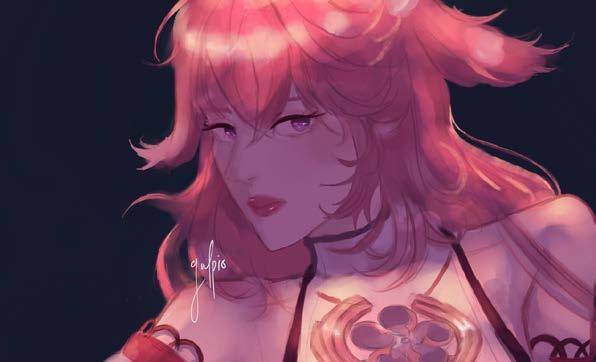
By that point, even the slightest glimmer of something akin to comic relief, like one of Frank’s friends (Dean Stockwell) lip-syncing to Roy Orbison’s “In Dreams,” is far more discomforting than funny, and that’s exactly the point. No matter how often this “small-town satire” is present in “Blue Velvet” (and trust me, it’s really not present all that often), the film’s most vile scenes simply aren’t played off as some overall farce, although Ebert insisted
By saying that, it’s undeniable that Ebert dramatically misunderstood Lynch’s intentions in crafting this story, but even a harsh critic like him was clearly affected by it: “’Blue Velvet’ contains scenes of such raw emotional energy that it’s easy to understand why some critics have hailed it as a masterpiece… These sequences have great power. They make ‘9 ½ Weeks’ look rather timid by comparison, because they do seem genuinely born from the darkest and most despairing side of human nature.”
Without even realizing it, Ebert precisely hits the nail on the head as to what makes “Blue Velvet” so brilliant. Above all else, Lynch is deeply studying the parts of the human psyche we’d most like to ignore, no matter who they might surface in. What you take away from that is for you to decide.
No matter what unforgettable images Lynch sears into your mind, though, you won’t be able to look away.
suddenly dies and she is kicked out of her home, Beyah is forced to go and live with her father in Texas. She has no relationship with him, and this change is huge for her; it takes time to cope with and process this new life event. While she is living with her father, she starts to feel something she has never felt for anyone in her life, ever — she starts to feel love.
by Colleen HooverWhen I was first selecting a book, I went through many options and remembered the recommendation that one of my friends made: to read a book by Colleen Hoover. Since I enjoy reading romance novels, I picked the book Heart Bones. I expected it to be like any other romance novel, but it wasn’t. It surpassed my expectations and made me feel as if I was in the story with the characters.
Heart Bones is a heart-wrenching novel that depicts themes of family, love, personal development, wealth, and growing up through relatable, young characters. Colleen Hoover uses literary elements to tell a passionate story through her exceptional use of motifs, bildungsroman, and themes.
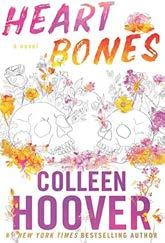
The main character, Beyah, lives with her mother (an addict) in Kentucky. When her mother
Throughout the book, Beyah learns what it’s like to have a real family and people who care about her. Her friends and family make her a better version of herself, and force her to crawl out of her shell where she has been damaged her whole life. Some important characters in the book are Samson, Sara, Sara’s mom, Beyah’s mom, Beyah’s dad, and Marcos. These characters help shape Beyah to become who she is at by the end.
Throughout the story, Hoover uses a strong motif to convey the relationship between the characters. One motif that stood out to me was the power of Beyah and Samson’s relationship, which was shown by the alarm that Beyah has set on her phone. At the beginning of the book, the sunset on the ferry has a strong effect on Beyah — “It’s the first sunset I’ve ever felt this deep in my chest. I feel my eyes begin to tear up at the sheer beauty of it.” Beyah has a deep connection with this sunset, and a little later on we find out that Samson is watching her at this moment. On her first day, she buys a phone; Samson helps her set it
A HEART-WRENCHING NOVEL THAT DEPICTS THEMES OF FAMILY, LOVE, PERSONAL DEVELOPMENT, WEALTH, AND GROWING UP THROUGH RELATABLE, YOUNG CHARACTERSHEART BONES
up, and he sets an alarm so she can wake up to see the sunrise. Instead of canceling the alarm, she keeps it throughout the entire summer, and she and Samson are always up watching the sunrise. This shows the power of their relationship because of the sunrise, which is really important to Beyah and that she is spending it with Samson. Something else that is important to the text is how Colleen Hoover uses bildungsroman. For example, at the beginning of the story, Beyah talks about how she had no one but herself when she was a kid. She talks about how she would have to eat every meal and save it because she never knew when she would get another one. She also talks about how she has never been loved and doesn’t really have any close relationships with anyone. As the story goes on, she learns the importance of love and relationships, and she grows to even have these relationships for herself. An important quote from the book that shows this is: “I’m ending it [the summer] with something I didn’t have when I showed up here. A family.” This use of bildungsroman was very powerful to me as the reader because of the growth you see through the beginning and the end of the book; it really resonates with the reader, leading them to feel happy for Beyah.
The last thing that is very important to the text are the strong themes that it shows. The text teaches readers the importance of having good relationships with friends and family and the major effects they have on someone. At the beginning of the book, Beyah was closed off and she was never really happy. Once her mom died and she was forced to move in with her dad and his family, she learned how important it is to have people you can depend on. This makes the reader reflect on their own life which, in my opinion, is very powerful, and makes me feel strong
emotions toward the text. In the end, Beyah is a whole new person who has changed for the future, and it really shows the reader the power of having important people and relationships in your life.
In conclusion, the book Heart Bones by Colleen Hoover is an amazing, heart-wrenching novel that I would recommend to anyone. The book has important themes and lessons that anyone could benefit from. This book was unlike any other romance novel that I have ever read because of the way that it ended. It was unpredictable and I really enjoyed that. Colleen Hoover used strong, powerful themes, bildungsroman, and motifs that made the book phenomenal to read.
offers an opportunity to learn and create in relative freedom, as well as the status that comes along with acceptance. When five strangers are selected, they are forced to confront the truths of themselves and the institution that surrounds them, from toxic relationships to suppressed trauma to hidden abuses. The strength and comradery they find are tested again and again, and as the stakes at Chandler rise, the Circle might just cave in.
“Nonfiction is about telling the truth. Fiction is about telling your truth. Fiction is a mystery that only the author can solve. You.”
The Chandler Legacies by Abdi Nazemian is what the Breakfast Club could have been. It takes high school stereotypes and gives them flesh, blood, and character. It is raw and real, and so very painful to read. It is, essentially, the story that should be told to every high schooler because, in many ways, it is the story of every high schooler. While every experience is different, and thankfully, not everyone endures what happens to these characters, every person can find themselves reflected in at least one perspective. And is that not the point of literature? To see ourselves reflected back at us, and to step into the experiences of others?
Every year, the elite residents of Chandler Boarding School compete to become members of the Circle. A prestigious writing group taught by a reclusive professor, the Circle
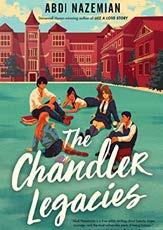
“There is no right or wrong way to be creative. Creativity is the only true purpose we have. It’s our power, and we have a duty to use that power responsibly.”
Told through five different perspectives, The Chandler Legacies follows members of a prestigious high school writing group as they confront the horrors of wealthy academia and the centuries of trauma that hide behind ivy-covered walls. With an autobiographical element, each perspective was handled with care, even as the individuality of
every character was established. The writing was wonderful, and the dialogue flowed naturally and realistically. It read like walking around a high school campus and listening to the conversations taking place.
The characters of the book:
“My legacy isn’t about living up to my past by trying to be perfect. It’s about the future I’ll help create by being myself. We make our own legacy.”
Spence is the princess. Rich, pretty, talented, and popular — she is the girl who would be easy to despise. And yet she is trapped by the perfection everyone places on her, isolated by the very pedestal people envy her for. She is talented, but she is also complicated, and will not stand by when her friends are hurting for the sake of her future. I loved her development as she opened her eyes to the world around her, and was so very glad that she wasn’t villainized for being feminine. Hers especially is a story of women supporting women, which was so comforting to see.
packs her days so full of activities that she doesn’t have time to think. At the start of the story, her identity is defined only by what she gives to others. Writing and being part of a group that doesn’t expect her to save them allows her the resources to value herself. As the story progresses, darker truths come to light. Yet even in the face of trauma, Brunson is always more than a victim. She is a person first, and what has been done to her never defines her. Such a narrative is essential, especially in a world that loves to make women victims and nothing more. Brunson writes the narrative with the help of her friends, and her story was brighter than a single moment of darkness. “Are you two different people?”
“I was for a long time. But not anymore. Now I’m just Beth Kramer, of the Connecticut Kramers.”
Beth is the invisible girl. Dealing with chronic social anxiety and compulsive habits, she is used to fading into the background. But the Circle challenges her to be more and watching her accept her potential was awe-inspiring. When Beth explores her sexuality and opens up, her world expands. She becomes a rallying point for all those who are left in the background, but who have the strength to stand in the spotlight (Spence would approve of my analogy).
“You know, the hardest part of pole vaulting isn’t physical, it is mental. It’s learning how to forget about pressure and fear and be in the moment.”
“And how do you do that?” she asks.
“You meet people who make you feel good about yourself.”
ability, joining the Circle gives him a place to be more than a medal. He confronts feelings of inferiority and the constant pressure to succeed, while also exploring a new side of himself that allows vulnerability. He doesn’t excuse bad behavior from other athletes and never turns a blind eye, even when it would be easier for him.
“Anything we write is a reflection of who we are.”
Ramin is the outcast. Perhaps the most complicated character in the novel, he flees his home country for the New England boarding school, only to find that danger followed him. Dealing with intense hazing and homophobia, Ramin’s chapters were heart-wrenching.
“She’s filled with love for this place. That’s why she wants to change it. Because she loves it.”
Brunson is the caregiver. Having raised her little sister because of her mom’s chronic illness, Brunson
Freddy is the varsity athlete. Measured only by his physical
Again, The Chandler Legacies needs to be in every high school library, and on every teacher’s bookshelf. It is a love letter to fiction and the power of creativity, as well as the family that can be found in the most unexpected places. I will not lie and say it is easy to read: it’s not. Some passages will rip out your heart, even as others will remind you that every person has the power to change things. For people who read, write, and consume fictional worlds as they need them to survive, it is a reflection of all that love.
“Think of all those young girls who dream of coming to this school. We can stop them from going through what you went through.”
Some passages will rip out your heart, even as others will remind you that every person has the power to change things
It is a love letter to fiction and the power of creativity, as well as the family that can be found in the most unexpected places
chapter concludes with this revelation, and the following one travels back in time two months. I find it interesting the way that the author writes the conflict of the story before the exposition. Because the author immediately caught my attention with such a major conflict, I was willing to continue reading about Willow’s life after — and before — this traumatic event.
friend, pleads with her mother to take guardianship of Willow. Thankfully, her mother, Pattie, feels sorry for Willow and agrees.
 by Holly Goldberg Sloan
by Holly Goldberg Sloan
Holly Goldberg Sloan’s Counting by 7s describes the life of 12-year-old Willow Chance after an important event disrupts her world. Orphaned at birth, Willow is adopted at a young age by Jimmy and Roberta Chance. Willow is very different from other children her age: she prefers to keep to herself and focus on one thing for a long time. For example, she loves analyzing people’s medical symptoms, scrutinizing plants in her backyard, or counting by sevens to large numbers.
The first chapter begins with an ominous afternoon. Willow attempts to text her parents that she will be home late, but neither responds. When her counselor brings her home later in the evening, she finds police cars waiting in front of her house. The next thing she learns is that both of her parents have died in a car accident earlier in the day. The first
The novel explores how difficult life can be for someone who does not seem to fit into the environment around them. Since Willow is interested in things that most children her age are not yet aware of, she barely has any friends at school. Even worse, her high intelligence is commonly misunderstood by others. For example, on a statewide common assessment, Willow scores a perfect score using only one-third of the given time. Not only does this fail to impress anyone, but Willow’s teacher also accuses her of cheating and sends her to the principal. Earlier in elementary school, when the teacher tells the students to lie on the floor and take a nap, Willow raises concern about the potentially harmful effects of bacteria on the floor. This makes other students laugh at her. They do not understand her point and think she is talking nonsense. From a reader’s perspective, I felt bad about the treatment Willow received. I know she has the potential to prove herself, but due to her weakness in communication and the lack of compassion others showed her, few people understood her.
The author also stresses the importance of belonging, whether to a family or a group of people. Right after the accident, the law requires someone to take guardianship of her until a permanent place could be found; otherwise, she would be sent to childcare centers. Knowing that Willow has barely any friends or relatives, Mai Nguyen, Willow’s
In the Nguyen family, Mai and Pattie are very nice and sympathetic towards Willow; the father of the family has long abandoned them, and the son, Quang-ha, does not seem happy about the appearance of a new person in the house. However, a greater issue appears: Pattie cannot put down her address on Willow’s official paperwork because she does not own a house. Her family lives illegally in a cramped garage.
After lots of consideration and communication, the Nguyen family and Willow move into Dell Duke’s apartment. Dell is Willow’s school counselor, and he is one of the only people who admire Willow’s intelligence. However, Dell lives a very disorganized life, and though he feels embarrassed to have so many people coming to his apartment, he knows this is the best option for Willow. For the following months, the five live together and assist in each others’ lives until Willow’s court hearing. By the end of the book, the five became a family. I simply could not imagine how dramatically different Willow’s life would have been had she been put into a childcare center where, according to Willow, all the children come from families where the parents never cared about them.
In the end, the most important message that the author shows is Willow’s transformation. Before everything changes, she is an obstinate girl who does everything in her life just for herself; after the accident, she learns how important it is to communicate and work with others. I am glad to see Willow’s growth. My favorite sentence from this book appears at the end, where Willow says that whenever she needs time to calm down in the future, she no longer counts by sevens, but she counts to seven.
style. Almost the whole game was hand drawn as individual frames, meaning that they opened up Photoshop, drew whatever it is they were working on, then animated it by using a bunch of different images (also hand drawn). This art is so immensely immersive and really takes time to shine and create gorgeous environments always decorating and setting the mood in each area.
Hollow Knight by Team Cherry Review by Jameson Bast, Hartland, WIWhen you think of “Hollow Knight,” you most likely think of a suit of empty, shining armor. In terms of this game, you’re actually getting a cute little bug warrior that lends you hours of exploration and upgrades, new charms and weapon combos, and that ultimate satisfaction of beating a boss you’ve been stuck on for the last three hours.
“Hollow Knight” is a game that has really taken me into the game world. Getting lost for hours in the massive underground map, always feeling like you’re finding something new, meeting new people, and collecting more and more money to buy that next upgrade.

The main thing that new players will notice as soon as they get into the game is the wonderful art
Another thing that really adds to the whole experience is the music and characters. With over one hour and forty minutes spanning over 41 different soundtracks all composed by Christopher Larkin, not only does it do a great job of setting the mood, but it also sounds absolutely amazing. I never got tired of listening to the OST for over 42 hours of playtime. Along with the music are the characters. Every character is distinct and has their own personality; most are fun to talk to, especially making you feel like an exploring adventurer with funny and entertaining dialogue.
Along with the visuals and aesthetic of this game is the actual gameplay. The only thing that I would have to say I didn’t like would be difficult bosses or missing an item or two that you need to progress. Now, some people might disagree with
Every character is distinct and has their own personality; most are fun to talk to, especially making you feel like an exploring adventurer with funny and entertaining dialogue
me and say that those are part of the game — but some are quite difficult to fight and find. For example, to beat the Pantheon of Hollownest, only around two percent of all-time Steam players have beaten it — granted, this is the hardest fight in the game.
The gameplay consists of lots of exploring and fighting enemies. Most of the time spent is finding new areas and fighting the things along the way. There are so many variables and things to find and fight that you never get bored. Your move set consists of your trusty nail, which is the weapon of choice for a bug fighting other bugs. An up, down, and left/right swing of your nail will do damage, as well as the enhancement of charms that give you an advantage over everything else. There are a total of 45 charms in the game and up to 11 charm notches. Charm notches are the max cost of your charms. Each charm has a notch price and is limited to the max amount of notches you have. This allows for endless combinations of them with some granting synergies: upgrading certain charms when used together. Needless to say (and spoiler safe), this allows for a wide variety of combat, and you will have to use many of these different tools to defeat tough enemies. Those tough enemies, being bosses, will present a challenge when facing off for the first time. The more you fight them, the more you can evade their attacks and get more damage in. This adds a big sense of progression to fighting the same thing over and over again because you learn more and get closer each time you go back.
“Hollow Knight” doesn’t have a ton of replayability after you finish it, though a multiplayer mod is available to play with your friends, giving the game more depth. Not for the faint of heart, but Steel Soul mode is insanely hard, forcing
you to beat the entire game with zero deaths — this also includes beating every boss on the first try. If you are really thirsting for more things to do, then going after the achievements and Pantheons (Boss Runs) can be challenging, but you can spend hours on these tasks. This is a game of game sense, and once you build a knowledge of it, you don’t want to forget it.
According to Steam, I have spent 63.2 hours with the game open, but closer to 43 hours of actual gameplay being immersed in every minute of it and loving the storyline, visuals, characters, dialogue, and exploration. If you are thinking of buying this game then I would 100% recommend it. On top of that, it is available for purchase on Steam, and you will not regret this wonderfully immersive experience.
released and considered too hard or too unfair. The series was made by FromSoftware, a Japanese company that is recognized for creating unique yet difficult games, and “Dark Souls III” is no different. “Dark Souls III” was, and still is, one of the most carefully crafted, beautifully bleak games ever made. The artistic style of the game is very
ashen and dark like a cold, cloudy day in the spring, perfect for the setting — a dying world. The player character is not a hero who plans to fix everything, but an undead who was resurrected to help feed the First Flame, a fire that keeps the world alive. “Dark Souls” does not make any significance out of the player character, instead, using their namelessness as a tool to show that you are not a special or chosen hero in this world — more so just someone who is getting through this world through pure luck and skill alone. All that remains in this world are the very few areas with any semblance of life left, and the undead who wander aimlessly to light the first flame over and over again, and turn their bodies into kindling for the flames to survive off of.
“Dark Souls” is a franchise well known for its crazy difficulty, so much so that this difficulty comes to mind whenever a new game is
“Dark Souls III” doesn’t tell its story by giving you a straightforward, narrated story. Instead, its story is told through item descriptions, short cutscenes, boss fights, music, and the environments you are put into. Everywhere you go in “Dark Souls” is like stepping into a painting, and though the world always has a sad undertone to it, it
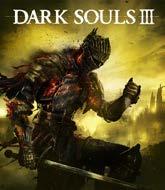
doesn’t mean that “Dark Souls” is creatively bankrupt. Every location is new and unique. The frozen landscapes are blinding and hostile, and the high walls and towers of the many castles are daunting, yet void of life. Exploration is rewarded thoroughly and shows that the world is bigger than just the story of the main character.
Besides the world being beautiful, the level of detail in every enemy and boss is higher than in any other game in the series thus far. Each boss is visually daunting, delightfully colored, and welldetailed like their own art piece. Every enemy fits their location and provides a bit of life to a bleak world — even if that life is an enemy.
The combat in this game is the perfected version of a combat system that FromSoft has been trying to master ever since the original “Dark Souls” was released in 2011. Customization is such a
heavily incentivized thing that no two playthroughs are exactly alike, and most people will have a different experience with the game just depending on what weapon they choose. The speed of enemies is much more aggressive and dangerous than in previous series. Instead of the game being a cycle of dodging and then counterattacking, the player is met with challenges that require them to use not only the space around them but the tools the player is
attack seems to come out of nowhere or a fight feels clunky, these events do not dampen the experience in any way.

“Dark Souls III” is heavily polished in almost every aspect and holds up as a mechanically challenging, yet fair game, even today. This game is a confident conclusion to a beloved series and cements itself as the last in a series in the most satisfying way possible — leaving behind a tale of tragedy and
given to navigate the many puzzles that “Dark Souls III” has to offer. Every boss fight challenges you to recognize the movement patterns and dodge windows for each attack. Though the game does have its rare moments where an
triumph told ever so subtly. “Dark Souls III” is a world you live in, instead of just playing through it, and that level of immersion speaks more words than any book ever could.
A TALE OF TRAGEDY AND TRIUMPH TOLD EVER SO SUBTLY ... “DARK SOULS III” IS A WORLD YOU LIVE IN, INSTEAD OF JUST PLAYING THROUGH IT
CREDITS
1 ARTWORK BY ELA M, SURREY, BC, CANADA

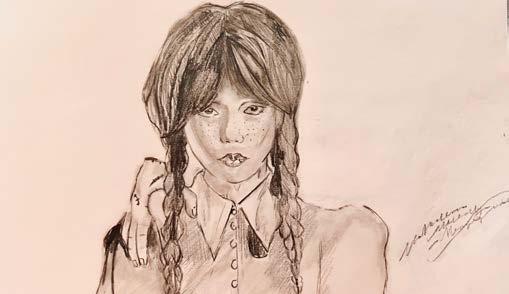
2 ARTWORK BY ANTIGONE STANLEY, ADELAIDE, AUSTRALIA
3 PHOTO BY ELLA WERNER, PITTSBURGH, PA
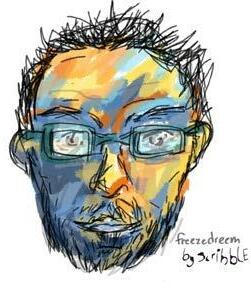
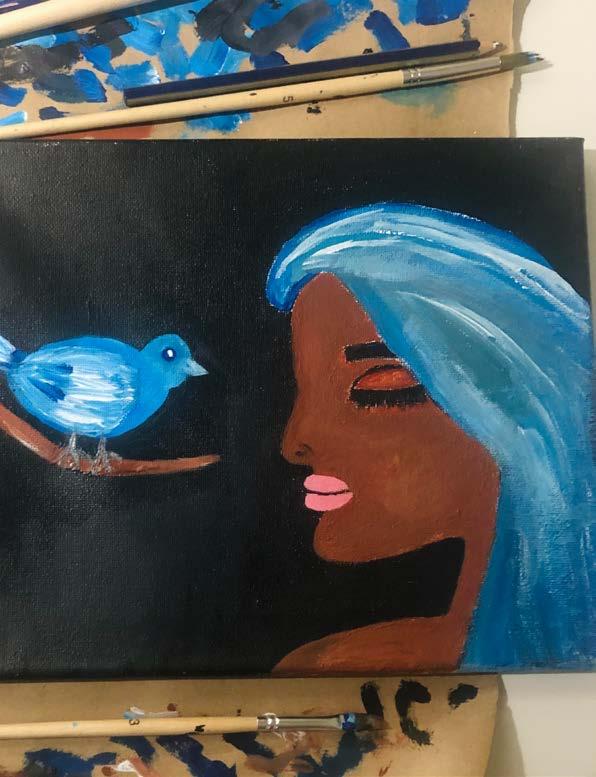 ARTICLE BY DONIELLE BURTON, SMYRNA, TN
ARTICLE BY DONIELLE BURTON, SMYRNA, TN
In the late 1700s to the mid-1800s, former and fugitive slaves began writing and publishing accounts based on what they had to endure as an enslaved person. These first-hand accounts were called slave narratives. Through these stories and detailed illustrations, abolitionists were able to uncover the untold truth of the life of a slave. In addition, they were able to give northerners insight into what slavery truly was in the South, while also spreading the antislavery message. In the present day, these narratives not only serve as essential historical sources; they created a new form of American literature that would be an inspiration to authors for years to come.
By the 1830s, slavery in America had been going on for over 200 years.
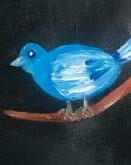
Approximately 400,000 slaves were transported to America from Africa. A large majority of these slaves wound up in the southern regions of the Americas. In the South — the slave states — slaves proved to be very useful. With an agriculturally based society, slave owners in the South saw slaves as an opportunity to get hard farm labor done without having to pay anyone. They could work their slaves in the field for long hours in excessive heat without having to do any work themselves. In the North, things were significantly different from the South. The industrial society of the North had no use for slaves. Their economy was largely based on the workforce — factory labor instead of slave labor.
After the northern states became free states in 1820, many northerners started to form their own opinions on the matter of slavery. They began to believe that slavery should be no more. This belief soon formed into the abolitionist movement: a
movement created to push for the abolishment of slavery. Abolitionists were not all white — some of the most well-known abolitionists were freed or escaped slaves, like Fredrick Douglass, Sojourner Truth, and Harriet Jacobs. These former slaves used their voices to spread their message of freedom throughout the states. They stood as symbols
describes life in Nigeria and his journey during the Middle Passage. His narrative became a bestseller and is proclaimed as the original slave narrative.
In the early 19th century, with the rising tensions over slavery between the North and South, there was a growing demand for first-hand accounts of slavery in the
of hope and a new future for Black people in America. Their activism and courage left footprints in many aspects of American history.
One goal for these abolitionists was to inform unaware white people on the pain and suffering that came along with slavery. To truly spread their message and change the minds of those who opposed them, several former slaves released personal narratives telling their stories and their truths. These narratives became known as the slave narratives. Slave narratives not only gave white northerners detailed insights on slavery, but also served as undeniable evidence to the counterargument that was pro-slavery.
Between the 18th and 19th centuries, it’s believed that nearly 200 slave narratives were written. The first slave narrative was written by Olaudah Equiano. In his narrative, The Interesting Narrative of the Life of Olaudah Equiano, Olaudah
United States. Former slaves, now abolitionists, wrote their narratives in response. Fredrick Douglass, an escaped slave, wrote the Narrative of the Life of Frederick Douglass, An American Slave. In his narrative, Douglass describes the death of his mother, songs sung by slaves, the limited education for slaves, and the tactics used to make men slaves. Douglass describes how slavery transformed him. He says, “My natural elasticity was crushed, my intellect languished, the disposition to read departed, the cheerful spark that lingered about my eye died; the dark night of slavery closed in upon me, and behold a man transformed into a brute!” The narratives describe how life is ripped away from you as soon as you become a slave. Narratives like Twelve Years a Slave, Incidents in the Life of a Slave Girl, The Narrative of William W. Brown, and so many others describe realizing the soul-crushing truth that they are not human beings, but property.
The slave narratives grew extremely popular with the public soon after they were published. Hundreds of thousands of copies were being sold around the world, and many narratives were being translated into different languages, such as French, Russian, German, and Dutch. Some narrative authors like Douglass and William Brown went on tour throughout the North and Europe. They wanted to lecture those who needed to be educated and share their stories with those who were willing to listen.
In the South, they were, to say the least, outraged by these narratives, which thickened the tension between the North and the South. The South claimed the narratives to be completely untrue and an act of criminalization. Some white southerners went as far as writing their own novels, describing the slave life as “happy.” Any southerner who supported the narratives were often threatened or even killed.
Harriet Beecher Stowe, the famous author of Uncle Tom’s Cabin, received hundreds of threats for her work. She even received a package containing the ear of a Black man from one of her threateners.
Slave narratives provoked questions of racism, justice, equality, and freedom in America. Since readers now had a glimpse in the life of a slave, many in the North, and
even the South, began to wonder whether slavery was morally and lawfully right. They started to wonder whether, under the Declaration of Independence, every person was getting the opportunity to pursue their natural-born right to “life, liberty, and the pursuit of happiness.”
Even after the Civil War and the Emancipation Proclamation, more and more slave narratives continued to be written and published. In the early 1900s, the Library of Congress set out to collect slave narratives that were never published. They were able to collect over 2,300 personal accounts of slavery and about 500 photographs from former slaves. This collection became known as Born in Slavery: Slave Narratives from the Federal Writers’ Project
Slave narratives inspired a whole new era for African-American literature. The slave narratives became their own genre and one of the most talked-about forms of African American literature. They served as an inspiration to the next generation of African American writers. Black autobiographies from the 20th and 21st centuries have to give some credibility to the slave narratives: especially ones written during the civil rights movement. Slave narratives inspired some of America’s classic novels, like Uncle
Tom’s Cabin and Huckleberry Finn They also influenced novels like The Confessions of Nat Turner and Beloved; both directly based on the slave narratives.

Historically, slave narratives provide first-hand accounts of slavery in the United States. They help us understand how slavery came about and remained intact for so long. Also, it allows us to have a deeper understanding of the relationship between Black people and white people during the 18th and 19th centuries. Slave narratives and fictional writings based on them have played major roles in creating a picture of slavery for those who now get to celebrate being free.
Slave narratives led people to question the meaning of freedom. It led them to question the unjust act of slavery and the ethical values of their own country. The doubt and uneasiness these questions created would help in the push against slavery and would eventually lead to its abolishment. By sharing their stories of slavery, these authors left a legacy in American literature, and they gave light to some of America’s darkest secrets. Their impact lives on in the lives of African Americans today and will continue to for generations to come.
The head wrap has long been part of African culture, however, when African men and women were forced to come to the United States as enslaved people, the story of this headpiece came with them. In colonial United States, this head wrap became paradoxical and representative of slavery to their white overlords, but there is much more meaning and symbolism behind this piece of personal adornment. The meaning of the head wrap can be seen in a variety of ways depending on the time period and the culture that is wearing it. Let not the meaning and cultural value of the head wrap to African Americans fade in the light of a different group of individuals who misinterpreted their culture. The head wrap may have been seen as a sign of slavery to some, but there was a much greater value to the individuals who had them wrapped around their heads. When African American individuals were brought as slaves to the United States in the 1800s, they were not allowed to bring clothing with them. This acted as a symbol of their new lives of servitude as they are stripped from their clothing and their freedom. Therefore, clothing became a symbol of their identity as it was now something of greater value and a start to their new lives. When these African individuals arrived to the colonies, they were often separated from their friends and families. After being separated, they were sent to slave owners to be auctioned off as slaves and given new names. This created an even greater identity struggle among their cultural and personal identities. There were not many ways in which they were able to express themselves as their clothing and shoes were all chosen and given to them. Despite this lacking of freedom of expression, enslaved women still found ways to reflect their identities through personal adornment, mostly through cultural beads or head wraps that they would place on their bodies. Helen
Greibel comments on these headpieces, “ It endured the travail of slavery and never passed out of fashion. The head wrap represents far more than a piece of fabric wound around the head.” This symbolizes the way in which they put their full force into keeping the symbolic representation of the head wrap as more than

The head wrap became a way for enslaved people to reclaim their own sense of identityARTICLE BY GABI DUBE, EDISON, NJ ARTWORK BY WESLEY DIFO, LAWRENCE, MA
just a piece of fabric. The head wrap changed the way in which women saw themselves and became a way for these enslaved people, specifically women, could reclaim their own sense of humanity. There is a long history of individuals from many cultures wearing head wraps all over the world. The African American woman’s particular style and head wrap is presented in subSaharan aesthetics. Originally, the head wrap was worn by both men and women, but eventually became almost exclusively worn by women. During the 1850s, white overlords added this idea of a head covering to later stereotype these black women as “Mammy”, or an enslaved woman in a nanny role, as if they are always supposed to remain in these positions and their headwear certified these symbols. The regulations that were put on the dress code of the enslaved African people allowed control among the white slave owners over them and the ability to diminish laws breaking or defying uncivil acts against the law.
In the colonies, racism was blatantly displayed toward African and Native American people as they treated them as though they were property and had ownership over them. White slave owners and colonial people believed that they were superior and that individuals of other races were subhuman and of lesser value to humanity. Therefore, it created this idea that society was to think of them as lesser beings. Selecting their own clothing or even walking around naked was accepted in these enslaved societies, while white men and women needed to be fully embellished to represent their social status. These European slave owners made them wear specific clothing as well as headpieces or head wraps as a sign of their low class and their ownership over them. In addition, slave owners also saw these as beneficial means
because it kept hair out of the slave’s face, prevented the spread of lice and became a helpful tool overall. In addition to the slave owners declaring a social status to the head wrap, within African communities there was also a social status associated with wearing it. There are different kinds of folds and fabrics that are worn for special social and religious events that are symbolic of the individual. Descendants of these enslaved women describe the head wrap as an image of courage that these women wore to represent their homeland and bring this culture to their new land through force.
The head wrap can primarily be seen from two different viewpoints, the cultural, personal, and revolutionary eyes of the African enslaved women or the oppressive and controlling eyes of
the European slave owners. The long history of how the head wrap has been displayed as a symbol in society represents its individual meaning to culture. This simple rag has served as a communal and cultural identity, specifically to the enslaved African people. The head wrap acquired a different kind of meaning, as a piece of courage that relates back to their African homeland and creates a greater tie back to their culture. The women who determined the history of the head wrap created a significance to the usage in later generations. The head wrap has become a significant part of their culture, as a uniform during the denial of their human rights. We should do our best to maintain the culturally symbolic definition of the head wrap in our society.
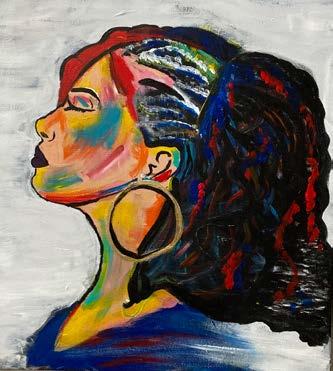
Following the tragic death of George Floyd in May 2020, the Black Lives Matter (BLM) movement underwent an unprecedented surge in support. Thousands of petitions, protests, marches, and strikes challenged the legitimacy of American policing practices and demanded institutional change in the criminal justice system. With such widespread advocacy for the movement, the possibility of change seemed to rest just beyond the horizon. However, undermining BLM’s era of sensationalism was a covert and far more encompassing force of the corporate world, eager to capitalize on the movement — a barrage of BLM sweaters, clothing pins, and ice cream ensued. Sporting BLM merch and consuming BLM products became synonymous with activism. However, corporate advocacy for social justice movements does far more harm than good.
While many Americans associate BLM with defunding the police or equal treatment between races, the movement aligns more closely with radical politics than liberal reform, challenging the mutually enforcing relationship between capitalism and racism and calling for a deconstruction of both structures. For a more concrete definition, let us refer to the Movement for Black Lives (M4BL). M4BL is a coalition consisting of over 50 Black activist organizations, including Black Lives Matter. Its website describes BLM as a “[push] toward collective liberation,” a phrase with heavy revolutionary connotations. The rest of the M4BL website is far from liberal as well — the platform adopts Marxist diction to advocate for anti-racist, anti-capitalist, and anti-patriarchal
The corporate world was eager to capitalize on the
policies, such as “a radical and sustainable redistribution of wealth,” reparations for historically marginalized communities, and deprivatization of natural resources and education. Furthermore, co-founder of BLM, Patrisse Cullors, stated in an interview that she and her colleagues are well-versed in Marxist theory and even consider themselves Marxists. (Unsurprisingly, this interview was eagerly milked by right-wing
comically ironic. However, this phenomenon must not be seen as a logical anomaly but a reflection of an important characteristic of late capitalism: that it is far more effective to distill a movement’s principles and incorporate them into the company rhetoric than to actively suppress them. By tying anti-capitalist movements into the appeal of liberalism, opposition to capitalism becomes a product in and of itself. The
The defensive support response can be identified in most sizable retail chains, expectedly coming off as clumsy, disingenuous, and forced: “Amazon stands in solidarity with the Black community,” the company tweets while working its employees to exhaustion. “Let me say clearly to our Black and African American associates and communities: We hear you,” echoes the CEO of Walmart as the company discreetly pulls All Lives Matter
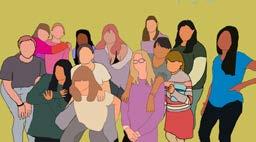
news sources to expose the socalled dirty socialists betraying the liberal facade of the popular movement, which, in and of itself, is an indication of the distillation of BLM to a more politically apathetic audience.) Evidently, with both M4BL and the leading figures of BLM nodding toward the movement’s radical intentions, the post-2020 association of BLM with indolent liberal activism feels all the more disillusioning.
It is apparent that BLM has far derailed from its original purpose. And while several factors operate jointly to cause this derailment, the retail world’s response to the movement was particularly garish in its adoption — and engulfment — of BLM into liberal capitalism. Often through painfully ingenuine declarations of support and virtue signaling, the frequent tendency for retail companies, many of which notoriously thrive off of rigid power hierarchies and unsavory labor practices, to express support for this movement comes off as
process of commodification by retail companies, then, can be distilled into two general stages. I will refer to the first stage as defensive support, characterized by the vapid public declarations of support and accountability that companies spewed the first few weeks after George Floyd’s murder. Evidently, this immediate response is “defensive,” as its intention is to avoid any negative association with brand ethics. It also effectively allies BLM with capitalist rhetoric, fundamentally denaturing the connotations of the movement and locking in its inevitable exploitation in stage 2, offensive support. Having dodged public criticism by supporting BLM, retail companies realize the profitability of loose allyship and take advantage of the movement’s relevance. Through social justice advertisements and merchandise, the BLM turns into a marketing tactic. The movement loses its integrity entirely — not only is it engulfed within capitalism, it perpetuates it.
t-shirts from their clothing lines. These hypocritical efforts to conceal blemishes in company image not only undermine the authenticity of such public declarations but render them misleading and false. And when supplemented with thousands of accounts from Black workers who have experienced unfair treatment due to their race and received no demonstrative effort from the aforementioned companies to fix these issues, it becomes clear that the intentions behind these feel-good statements are fundamentally corrupt. In fact, upon closer inspection, many public statements flaunting support of Black Lives Matter contain alarming language within themselves. Take a Tweet by Adidas, for example: “The success of Adidas would be nothing without Black athletes, Black artists, Black employees, and Black consumers.” A second glance at the word choice alone reveals underlying intentions with the post. Stripping unnecessary phrases and embellishment aside, the “success
The success of Black Lives Matter merchandise rests on the belief that buying products associated with a social movement benefits the movement as a whole
of Adidas” is placed front and center, with Black employees framed as means to achieve this success. Black “athletes, artists, employees, and consumers” contribute to the growth of the brand; therefore, they must be valued — not because they are people, but because they buy and sell and make the company money. Despite the lack of good faith behind these messages, they prove effective in their purpose: allying consumerism with activism. Declared support only has to go so far as to convince a majority of customers that it is still morally justifiable to buy from these brands. And this tactic works: public feedback to these statements of support has been overwhelmingly positive, and, in response to these successes, several companies have demonstrated a desire to push beyond feel-good verbal declarations of support. BLM clothing lines drop. Coupon codes and discounts spring up across retail websites. Within a matter of months, we charge head first into the territory of offensive support.

Distressed Black Lives Matter
T-Shirt: 2,046 ratings on Amazon. The success of Black Lives Matter merchandise rests on the belief that buying products associated with a social movement benefits the movement as a whole. But the construction of this narrative rests on the exploitation of Black empowerment: during a time when it feels like the very roots of a country have betrayed its people, wearing a physical sign of support often feels refreshing and assuring. For the non-Black population, Black Lives Matter merchandise also appeals to allies exhibiting an eagerness to contribute to the movement. Companies take advantage of this desire for relief: fighting an unbudging system for months or years on end leads to an overwhelming presence of powerlessness, but by purchasing material products that align with the movement’s views,
the merchandise conveniently performs our anti-capitalism for us, invigorating a fraudulent sense of satisfaction. Yes, the words “Black Lives Matter” on the distressed t-shirt do not call for reparations, restructuring of schools, or police abolition, but they do bring about a feeling of accomplishment for the wearer. Spending money to show support for Black Lives Matter feels adjacent to activism, even when the purchase itself has no net benefit to the movement. Offensive support thrives on customers’ unknowing contribution to the movement’s commodification, further integrating it into the capitalist system. Since the phrase “Black Lives Matter” was coined in 2013, the radical origin of the term has been turned on its head, commodified, and assimilated into the very power structures it had once opposed.
Similar patterns of commodification can be seen in countless other movements in recent decades, from feminism to queer advocacy. Just like in the case of Black Lives Matter, radical messages are stripped from the movement’s origin and filtered into virtue signaling and eye-catching t-shirts. The process is further catalyzed by the enthusiastic participation of consumers, lured by an illusion of change while existing comfortably within the realms of the status quo. Over the past decade, this incessant process of commodification has degraded activism into products to be worn and flaunted, a reflection of the expansive and highly adaptive nature of 21st-century capital that makes it, as Frederic Jameson so bleakly articulates, “easier to imagine the end of the world than the end of capitalism.”

I stood below the towering resorts that shimmered with thousands of lights, all in different colors. The space around me, in its distinctive colors, highlighted the wildly unconventional features that set it apart from the others. Looking up distracted me from what sat in plain eyesight, which is almost indescribable, filled with myriads of bodies bustling past, while others barely stumble. This place seemed to strip the personalities away from people, taking societally functional individuals and recycling them into animalistic pawns in an isolated, reality-devoid game.
SHE WAS WHAT THE CONSUMER WANTED — SHE EFFORTLESSLY EMBODIED THE PLAYFUL CHEEKINESS OF VEGAS, A BEACON TO EVERYONE WHO WALKED PAST THIS CORNER
On the direct left from the corner on which I stood, stretched a line of people across from an older woman, scantily clad in a rhinestoneencrusted ensemble with plumes of ostrich feathers sprouting from her headdress. Her beaming smile and flirty facade was magnetic to the majority who walked passed, drawing them to her line. Barely 21-year-old college students, newly retired baby boomers, and of course, middle-aged men, drunk on beer, who acted like they were the first to flirt with her all day. She persisted, however, distracting each patron from her visible smile lines, exhaustion, and annoyance.
With such poise, she snapped photos with each person in her line,
A MAN, NO OLDER THAN 25
receiving small handfuls of cash after each interaction. I assume it must be worth it only from the dollar bills sprouting from the small clutch she kept at her side. There were at least 70 in there, though with her charisma, probably closer to 120. She was what the consumer wanted — she effortlessly embodied the playful cheekiness of Las Vegas, a beacon to everyone who walked past this corner. A decked-out distraction from reality rolled into a single woman.
A few feet behind the glittering showgirl in a stark, dirty corner sat a man, no older than 25 — however, he could be mistaken for decades older if not for the shred of youth in his fatigued, sunken eyes. Almost motionless, he lied on the floor in his tattered shirt and jeans, head resting on an old backpack. It was as if only his body remained, while he was long gone, not present or conscious, despite the chaos all around him. He did not make eye contact with any person, nor did any of the world around him cause an emotional or physical reaction of any sort. People passed by him hurriedly, grabbing onto their children, spouses, and such as if he cared. It was more likely that he didn’t notice them at all. There was but a shred of life left in him, enough to keep the blood pumping through his veins, but not much else. He served as a portrayal of depressing reality against the showgirl’s glamorous performance that represented the commerciality of the city. A young,
washed-up representation of the cruel world.
It smelled strongly of weed where I stood. It wasn’t as though someone around me was smoking it — instead, it seemed to be a buildup from years of people smoking it in this area. But then again, this was not the only corner in Vegas that smelled like this. The dust from the desert lying beneath, and the perfumey scents wafting from the hotel lobbies created a conflicting ambiance around me. It was an unsettling marriage of the advertised fantasy and the grim reality of this specific corner. The only thing holding it together being the consumer, the ones that saw this place from an ignorant lens, and those who were simply too intoxicated to acknowledge the dismal underbelly of Vegas. These were people who paid to be stripped of their reality for a speck of time, and to be distracted entirely.
THE CORNER ON WHICH I STOOD WAS BUT A MORSEL OF VEGAS, EXCITING AND CHARISMATIC, AND YET EVER SO DEPRESSING AND DARK NOT FAR BENEATH THE SURFACE
The corner on which I stood was but a morsel of Vegas, exciting and charismatic, and yet ever so depressing and dark not far beneath the surface. People pass by aimlessly, manipulable pawns to the profitgenerating, morally void anti-reality that they knowingly fed. A superficial microcosm of grim humanity.
A FEW FEET BEHIND THE GLITTERING SHOWGIRL IN A STARK, DIRTY CORNER LAY
As we glided down the magical streets of the ancient city, the illustrious smell of French cuisine tempted our noses. Just the sight of it made our mouths water. Delicious pastries sitting comfortably in the small, locally owned stores that added to the friendliness of the massive city. The smell of coffee and bread had my taste buds dancing with excitement.
Hundreds of little shops carried the hopes and dreams of those who owned them, culture packed into their hearts. We silently stopped to stare up at the dark blue sky, containing the brightly shining stars that bewildered our eyes. The full moon stood in place like a painting in the Louvre, patiently waiting for its viewers to admire and gather around. We were deer in headlights. Slightly cloudy skies and a cool breeze created the perfect atmosphere. Not too hot, not too cold — perfect weather for exploration. The chattering mouths of the civilians all around us, dressed in various colors and styles, were amazing. Thousands of tourists from all parts of the world, speaking all kinds of different languages, humming all kinds of melodious tunes, all savoring their time in the brilliant city. Everything fit together perfectly, like pieces of a puzzle.
Speeding toward our final destination, the crown jewel of them all, we laughed, listened, looked — loved. To us, nothing could beat this feeling. It felt like we were riding around heaven, as if all our issues and worries were gone, floating away into the deep blue sky. Each building, shaped and colored in its own special
way, told its own story. Stories of glory, triumph, hardship, war, passion, love, identity, religion, culture, and history. Stories that didn’t need words, just the viewer’s imagination and creativity. Stories that were packed full of emotion, that fabricated the world we know today. Royal blue and shiny gold colors dazzled the eyes, distracting them from everything else around us. The character of the city rested in the foundations of these buildings, highlighting past struggles and successes to captivate its visitors and create a sense of optimism for the future. Off in the distance, slowly approaching, was the aforementioned “crown jewel” of the city.
Towering above the other buildings, its glimmering lights fluttered in the night sky, calling out to the hearts of those who gazed upon it. The large, beautiful metallic structure was the center of attention, the final puzzle piece that completed the million piece puzzle of dreams.
There, in all its glory, it stood, a feast for the eyes. Perfectly shaped, in the perfect location, with the perfect people, and the perfect environment. I could’ve stared at it for hours. It just didn’t feel real. If the beautiful view wasn’t enough, the kindness of the souls around us radiated positive energy, making us feel at home even though we were so far from it. These people carried the history of the city with them every day, teaching it and passing it on to their children, who will embrace it and spread it around as well. It was very important to pause and take a look around — to just enjoy this once-in-a-lifetime feeling. Surrounded by culture, a unique
one that was like no other. The feeling of joy and energy in the air was palpable, shared by everyone there. Time, it seemed, was passing by ever so slowly, everything moving in slow motion.
An overwhelming combination of croissants, macarons, cheese, soup, and much more filled the air with pleasant, yummy smells that made our stomachs beg, louder and louder every time. Passing by hundreds of local bakeries and sweet stores, our noses had the time of their lives, discovering new smells every single passing second. The smell of smoke infiltrated the smells of food, as shady figures often passed by with a lit cigarette nestled between their middle and pointer fingers. Loudly creeping out of alleyways, stumbling down the sidewalk, crashing into trash cans, drunk as a skunk. Sparse patches of gray hair covered their droopy faces, pupils dilated, legs wobbly, shaking tremendously like a building nearing collapse. No sure destination, just wandering around aimlessly, their minds being controlled by the booze. Of course, nothing is perfect, but the magical city more than made up for the minor discrepancies.
The combination of dark, black smoke and enticing, heavenly food created a unique smell that differentiates Europe from the rest of the world. Of course, we easily forgot about these drunken people as soon as we caught another glimpse of our exquisite surroundings: the food, the people, the history, the culture, the architecture, the music, the colors — EVERYTHING! Truly, this place was, and will always be, extraordinary.
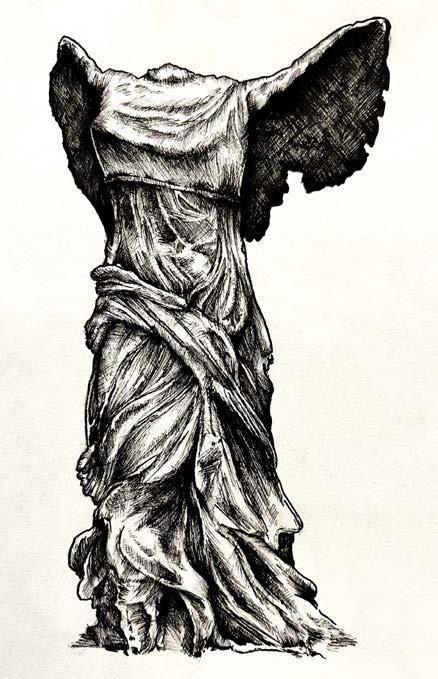
Each building, shaped and colored in its own special way, told its own story
The Volkswagen bus is a staple of my childhood, in large part due to my dad. The man has an intrinsic link with the vehicle, and through him, I felt that connection as well. In the summers of my youth, my family would make a habit of taking trips in our camper. The bus was the color of the sky on a hot, cloudless July afternoon. The seats in the back that my sister and I resided in smelled strongly of old fabrics. My sister had a certain disdain for the cheap vinyl interior and the heavy musk inside the cabin — but to me, it felt like coming home.
being, I was only seeing my dad on the weekends. There was a significant amount of change occurring for everyone in my family simultaneously, and it was easy to get caught up in. My father, who is not a very sentimental man, was purging a lot of our family’s old “stuff” that wouldn’t be as useful moving forward. Among the things lost was the blue bus.
My father had exchanged our family camper for the husk of a much older model. I was heavily suspicious of my father’s judgment, wondering what value there could possibly be in the old hunk of rust. What remained of the paint had mostly faded away, leaving only strange shades of gray and white. The silver trim had mostly fallen off, and the rubber along the windows had cracked and began to crumble into pieces.
hopefully bring her back from the dead. I went a long time without seeing the bus, as my dad moved around waiting for a new place to settle, and so the rusted old machine left my mind; that was until one overcast day, when my dad brought me to the shop tasked with her restoration.
When my parents told me they were getting a divorce, I was only seven, maybe eight. My mom moved out into an apartment close to school, and for the time
For a period of time, nothing was done with the new bus, which needed much more time and attention than could feasibly be given to it. However, when it was time for my dad to leave our old family home behind, he had the bus sent away to a shop that would
The downtrodden weather only accentuated the blandness of the warehouse. The exterior was coated in beige vinyl siding, surrounded by roads filled with other dull, nameless buildings. There were a handful of large garage bay doors that had all been shut, keeping the dreariness of the outdoors from seeping into the building. To the right was a small staircase leading into the building. I followed my dad through the entryway.

My sister had a certain disdain for the cheap vinyl interior and the heavy musk inside the cabin — but to me, it felt like coming home
I was heavily suspicious of my fathers judgment, wondering what value there could possibly be in the old hunk of rust
I passed through the small foyer into the garage. I was greeted by a pair of men a few years younger than my dad, and behind them was the rusty old bus. I was let down to see that its appearance was relatively the same. Other than some new shiny exhaust tips, the exterior was just as decrepit as ever. I wondered why my dad was so excited. I looked around the shop. The walls were littered with shelves and greasy tools, along with posters for movies too old for me to have ever heard of. The adults conversing around me seemed meaningless, until one of them climbed into the bus, and unleashed the roar of the engine upon my ears.
I left the vinyl covered warehouse full of excitement. My dad made a handful of visits to the garage after that, but I didn’t hear much of the bus for a long while. By the time I was 12, my dad was in the process of moving into a new property. On my way down the driveway one afternoon, I saw the bus perched on the edge of our driveway.
I sat myself along the leather bench seat inside the cabin. My dad turned the key, and for the second time, I experienced the excitement of the
machine coming to life. The bus shook, the sounds of loose metal rattling were joined by the aggressive roar of the engine bay, drowning out the peace and quiet of our home. My dad offered me a pair of headphones to block out the overpowering sound. I watched him throw the shifter back and forth as we slowly chugged down the road. Though we couldn’t hear each other over the sound of the bus angrily putting down the road, the experience and joy was shared between the two of us — my father and I making new memories.
ARTWORK BY ELLA HEDGES, DAYTON, OHThe bus was often sedentary, needing fixes here and there, which we would attempt to keep up with. The long winter months were spent cooped up in the garage, hiding from the elements. In the spring, when the

weather was warming and the ground thawing, we would take her out of the wintertime prison, only to find three new issues that had popped up, replacing those that we had already addressed. This pattern continued for the next few years, until the spring of 2022, when my dad decided it was time to sell the problematic project car.
I cringed at the idea of selling the Volkswagen. I had begun to take pride in our ownership of the old car, feeling as though it was the closest thing to a birthright as I have ever had. I argued with my dad, appealing to him in every way that I could think of. Still, my best attempts to draw out his sentimentality remained fruitless. As I consider my future, and what possibilities lie ahead, it occurs to me that my time with my family is quickly coming to an end. My years of college will be spent largely in another state, away from my dad, and away from the bus. The thought of coming back to a home where the opportunity of riding with my dad is not present frightens me, but perhaps it will be an opportunity for me to find a new project of my own.
I had begun to take pride in our ownership of the old car, feeling as though it was the closest thing to a birthright as I have ever had
Blood trickles down your leg
The mosquito bite you never let heal
The person you were would not like this new creature you’ve become
The person I was would hold you just the same
Your silhouette melts into the darkness of my room
I have never been able to tell it from my bedpost in the night
You hold my fingers to your neck, Beg me to find a pulse
I hope the monsters you run from rip us apart
I hope they put us back together wrong
So one half of you is the other of me
Flowers wilt around us as you ask me if you can be saved
I look at your blood staining the dirt
And tell you yes.
BY PHOEBE FOGEL, MAWinter settles as an icy breath, yet sweet, I pray thou not fret
There is no need for thy concern, for spring, like birds, shall return.
BY RUOHAN HUANG, SAMMAMISH, WA(Inspired by “Enchanted Island,” 1978, by Millard Sheets)
Tranquility overcomes the sky, in shades of glossy crepe pink and mauve purple.
Ice, as if frightened by the light, begins to release its tight grasp on the silk water.
Flying, cawing, the gulls appear on shore of the lifeless branches, once strong enough to withstand the storm, now resting in the glacial air.
The gulls cheer for the return of the crystal clear glass below them, holding the natural color of the sky. Within the gusts and swirls of the wind, and the bitter cold touch of the water, there is a serene lagoon, awaiting the melting of the ice and the return of life. The stiff branches in eternal lull, reminiscing the silent yet lively world around them, enchantment.
BY ANONYMOUSThe diction arranged in poetry, the syntax of this ode. Passive voice’s entirety, being jointly juxtaposed. The pretentious pomposity, of alliteration in prose, Venerates our verbosity, and vivifies our woes.
Yet we are but a reflection, of the bigger world at bay. Where the problem-solving solution, is to write some symbolic play.
Filled with the delusion, of prolix messiahs we’ve essayed, We seek our absolution, in witless wordplay.

The vanity of poetry, full of rich literary glaze, Layered with similes, for those we try to amaze. We’re lost in this sea, of meandering masquerades, Yet we emerge carefree, and paddle against the wave.
We garnish our verses, with synonymous jargon and write about “the search”, and pretend that we belong Amidst rhyme schemes I’ve coerced, we find purpose in these songs. Poetry is our curse, and it will stay with us lifelong.
BY ZANE LU, SHANGHAI, CHINAI remember how you used to smell of vanilla.
How we would traipse through the house with our dolls, dreaming of the perfect family.
We would go out to the backyard, you would ask me to pose, wanting to take my picture. I would watch your every move intently.
I remember when mom and dad would fight. You would hug me tenderly and say, it’s not your fault, everything will be okay.
Now you won’t respond to my messages.
And I wear vanilla perfume, in hopes of becoming a little more like you.
BY ANONYMOUSI never said I cared About your problems
But I never said I didn’t care. I’m not the one to call When you’re losing sleep; But if I had to, I’d put on a facade of alertness, And listen while you puke up your emotions
All over my pajamas
Occasionally interjecting with A sympathetic consolation. I can be off putting. Distance is a virtue, And you’ll never catch me closing the gap.
I like to think of myself as a flower. A beautiful flower, But one that requires tenderness And more than a bit of caution — To prevent the poison from getting out.
You’d never think of me When planning a party
I’m not a host, nor a caterer And I’m better at separating the chaff
Then growing the wheat But when the time comes, An invitation will arrive in my mail Just the same And hopefully you know I appreciate it
Although I’ll never speak the words To let you know, I am here. And I’ll try my best to please you, Because I know it makes you happy
To see me unfurling my petals And embracing the sunlight.
BY JAMES WILSON, MINNEAPOLIS, MNSunday afternoon
You left me in rain alone Said, “love, it takes two.”
BY HAOYUE DENG, CHONGQING, CHINAThey were first high in the strong mountains, then descended slithering rivers that converged as one, united through the plains, through the forest, through the cities together they reached the large and omnipotent Ocean, where they were broken, torn up in discarded pieces that drifted away.
BY ANONYMOUS, PARIS, FRANCEI’m becoming my own home
The cracks of light are starting to break through, brightening my face
The beginnings of peace dawning down on me, Painting dreamscapes over the darkness
The swirling rhythm of the wind bending the trees
The records spinning softly, carrying covert conversation
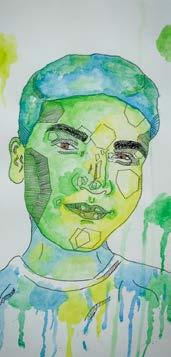
Nighttime melting into the gentle sunrise
Wrapping my world in hopeful light
There is meaning in the stillness
Sitting down and listening to your own breath
Feeling the breeze in your hair, closing your eyes
Bring me back to life, please
There is inspiration in isolation
Memorizing the road map of life, following the twists and turns of time
Writing poems and tossing them under the bed
Basking in the glowing intimacy of freedom
i. If I’m ever annoying, you know exactly what to say.
“At least I’m not ashamed of being Chinese”
like it’s something you can clap onto my wrists like handcuffs and hold me accountable for. You half-disguise it as a joke, but the joke is always peeling at the edges, curling like your lips; and you let it show
because you know I’ll dry up afterwards like a hawthorn berry, flattened into your favorite New Year candy.
ii. Do you have at least one trusted adult you can confide in?
I used to color in the tiny circle next to Yes, so that when you’d left the room, Dr. Sherry wouldn’t look at me with puppy-dog eyes and ask if there was anything I’d like to open up about;
but I started choosing Yes like I meant it, like all I needed to do was act like it was true.
iii. The Asian girls at school have names that taste like dessert.
Annabelle is French pastries with cream, Kaitlyn is strawberry sorbet; Jenny tastes like apple pie, buttery and inviting. Some of the girls have Asian names, a rare two or three: bitter mouthfuls, all vowels and unwieldy consonants pushed and tangled together. They’re shortened to something that’s sweeter on the palate: Min, Kei, Lee. And those are okay, too.
iv. The name you gave me is separate and hard-sounding.
Qing Lan. A knot that trips up classmates, substitute teachers, dentists, piano teachers, swim coaches.
The space you added — “In Chinese, it’s two characters, not one”— means I’m usually Qing: Ching. Chink. Not cute-and-unique foreign. Foreign like hawthorn candy, tart and only tolerable to the Chinese tongue.
v. I expect you to smile to show you understand, maybe even hug me.
Your eyes never leave mine. “I named you for what you are. You’re Chinese. You’re not a Rebecca or a Stephanie. Why are you embarrassed by your heritage?
Is it that shameful to be Chinese? Do you want to be white?”
Your mouth curls downwards, bobbing up and down as it grinds hawthorn candies to dust.
BY MING WEI YEOH, CHANHASSEN, MN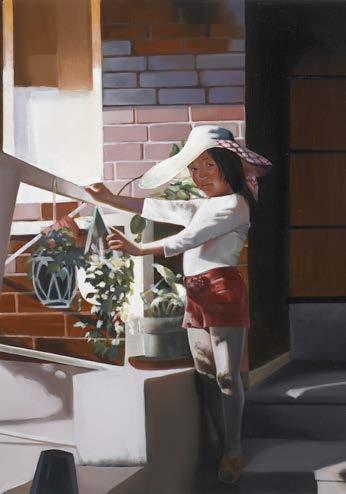
watch movies that make you feel lonely
on your bed, stretched out on your stomach and propped up by sore elbows
make sure your spine aches at the curve, the shape of it sunken into the mattress
marvel at how the coffee in the cup holder, filled nearly to the brim, sways with the rocking of the car but never quite spills over the edge
see sure and sculpted hands grasp the wheel stare in envy as he peels out of the parking lot cling to his empty words grasp onto their replicas next week
emotions burn a hole at the base of your throat and behind your eyes, be sure to wash it out down with arizona teas, hair dye and nail polish
find half-opened packets of nicotine gum and used e-cigarettes on the bathroom sink, sticky with rings of spilled soap and uncapped toothpaste a bottle of contact solution is dented where it didn’t pop back into place after being squeezed brush in and out of this space daily, without thought see the mess but never tidy it pave a path into the floors of hallways
traipsing the same ones over and over again five days a week
straps dig into shoulders eyes cast down.
don’t look at people you know they’re a reminder of what you’re missing —
and you don’t remind them of anything at all
lose your mind on kentucky back roads
music that makes loose bits in the car rattle
static that fills the air when you stray a little too far out don’t look at the animals on the side of the road entrails bleeding out onto yellow lines keep your eyes on the line of the path ahead, trees on either side drop chips and gummy bears onto your lap wrestle with a bottle cap one-handed orange roads signs display words you don’t read, don’t have the time for
deal with your unworn dresses, unworn bras pants that hug to thighs like a sick reminder drown out the popping of seams, press your palms to your chest and push to flatten
flatten so it fits right grind it all into dust shove it under your bed, step on it by accident later draw on everything, scratch it out if it looks bad
leave old used forks and cups on the headboard (be careful not to let them fall on your face while you sleep)
toss dirty laundry somewhere vague hang some damp shirts in your room to get rid of the dry heat, to get rid of the rattle in your lungs that make the springs in your mattress creak every time you heave
lie on it, stretched out, and watch movies that make you feel safe.
BY ASHLEY PARK, LOUISVILLE, KYIf I said – crying in winter
The cardigan’s drastic stain of blue
On the mere edge of the collar
If I said, blue nails on those slight smothered fingertips
Of the girl with weary eyes
Grasping a notebook in the dark Holding on to her dear life.

If I said, ocean eyes dwelling from a distant –
Or drowning in the temporary excitement lingered autumn wind
On a bland day in between the space outside this world
Blue, I said. Inflicted, blue.
BY YIJIA LIN, CULVER, IN

Nearly a decade earlier, fouryear-old daughter of NFL player Devon Still, Leah Still was diagnosed with a rare and deadly cancer — stage four neuroblastoma. Leah battled through an arduous nine months of chemotherapy treatment before being declared cancer-free in March of 2015. Together, the Stills’ “STILLSTRONG” social media campaign for childhood cancer awareness raised over $1 million dollars and Leah’s strength and sweetness struck millions of hearts.
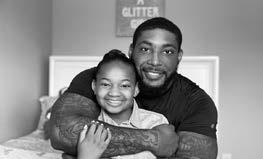
Leah makes frequent appearances on her dad’s social media account (@devonstill) and supports the pair’s Still Strong Foundation. They have also launched educational initiatives with United Therapeutics called Braving NeuroBLASToma. She continues to share her survivor story both literally and figuratively — penning the forward for one of Braving NeuroBLASToma’s children’s books, Zara Takes Off.
Leah looks ahead with goals to expand projects for childhood cancer awareness and growth in her sports, scientific, and social activities.
SARAH: Has your perspective on your journey with neuroblastoma changed as you grew older? What goes through your mind on anniversaries of your diagnosis and remission?
LEAH: Before, when I was battling cancer, I was not really aware how serious cancer was. Now, I know that it was VERY serious and I also now know a lot of medical terms that most people my age wouldn’t. During my cancer anniversaries, I’m just thankful that I’m still alive and have a chance to experience life.
S: As a survivor and advocate, what do you hope other people understand about neuroblastoma? What are some ways they can show their support?
L: I hope that people understand how this affects not just the person battling, but everyone who loves the person. I want people to understand that this is a very serious thing, because sometimes I’ll see people joking about cancer and I’ll just sit there and wonder how people can possibly find that funny. People can show support by asking family members or the patient themselves what do they need to do to help them get through this and how they can support them.
S: What inspired you to write the foreword for Zara Takes Off ? What did the writing process look like for you?
L: What inspired me to write the foreword for Zara Takes Off was my battle with cancer. We didn’t know what to expect when I was fighting and it was hard. So, now I want to be a part of projects that provide resources and information to families to help them with their fight. The actual writing process wasn’t hard. But, thinking back to what I went through was hard, but necessary in order to help.
S: What is the biggest lesson
you’ve learned from your dad? What is the biggest lesson you feel he’s learned from you?
L: The biggest lesson I learned from my dad is to allow myself to be vulnerable and show emotion. I think my dad has also learned that it’s okay to show emotion to someone going through something, so they know they’re not alone.
S: How would you describe your relationship with your mental health and the way you see yourself? How do you approach challenges and difficult conversations about these topics?
L: I feel my mental health is good. However, I do sometimes struggle with how I look because I feel that cancer has really affected my life and sometimes I get upset about it. The way I approach these feelings is just by talking to my parents and friends about it.
S: What are a few things you are really passionate about right now?
L: Right now, I’m really passionate about science and becoming more social and making new friends.
S: What are some goals you have for your future and your advocacy?
L: My goals include playing sports again and bringing even more awareness and support to families fighting childhood cancer.
S: Finally, what is one thing most people wouldn’t know about you,
or what you hope people know about you?
L: Most people don’t know that I like soccer, playing video games, and helping people. I would like people to know that I am just a normal kid, like every other kid, and that cancer isn’t who I am, it’s something I went through. I am more than someone who had cancer.
To support Leah Still and Devon Still’s advocacy for childhood cancer, find more information at the Still Strong Foundation’s website (stillstrongfoundation.com). You can also follow Devon Still on Instagram (@devonstill).
To read Leah’s forward in Zara Takes Off, and more about the Still’s journey, visit Neuroblastoma-Info.com (Braving NeuroBLASToma) and download the book.
In partnership with United Therapeutics, mental health resources for families on their cancer journey are also available online. The Mental Health and Childhood Cancer Journey panel discussion features patients, parents, and expert clinicians. You can view them by clicking here to visit the Coping with Childhood Cancer website.

CREDITS
1 ARTWORK BY HAE SUN RAH, SEOUL, SOUTH KOREA
2 ARTWORK BY ANONYMOUS
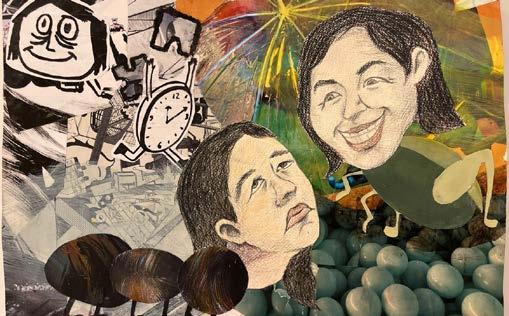
Anonymous, 7
McKenna Olson, 8
Sherlock Gan, 12
Ally Cytrych, 13
Maddie Helpman, 14
Anonymous, 16
Haylee Griffith, 19
Cindy Nie, 21
Finn Hutton, 22
Ava Ely, 22
Nadia Bollinger, 22
Gabby Woida, 22
Elena Zaganjori, 22
Anonymous, 22
Soeun Lee, 24
Ana K., 25
Leyla Unerli, 25
Anna Feng, 26
Brooke Hansen, 27 Ben Parker, 28
Kaci Dassow, 30
Abigail Sterner, 31
Bailing Hou, 33
Reviews
Jameson Bast, 34 Rocco Jampedro, 35
Donielle Burton, 35
Gabi Dube, 41
Kathy Xu, 43
Marli Brown, 47
Anonymous, 48
Jaden Dougher, 50
Managing Editor: Noelle Campbell
Consulting Senior Editor: Cindy W. Spertner
Associate Editor: Kylie Andrews
Consulting Editor: Ashley Nix
Head of Strategic Partnerships: Chane Hazelett
Phoebe Fogel, 52
Ruohan Huang, 52
Anonymous, 52
Zane Lu, 52
Anonymous, 53
James Wilson, 53
Haoyue Deng, 53
Anonymous, 53
Riley Bellinger, 53
Ming Wei Yeoh, 54
Ashley Park, 55
Yijia Lin, 55
Sarah Yee, 56
Sofia Li., Front Cover
Pepper Rose, 6
Marian De Silva, 8
Smrithi Sudharsun, 10
Anonymous, 11
Evie Davis, 11
Danmeng Hu, 11
Kylie Brookshire, 12
Brena Rose, 13
Grettel Torres-Santiago, 14
Sarah Wang, 17
Asha Mankad, 18
Elena Zhang, 20
Fatima Al Hashmi, 29
Ruohan Huang, 36
Ela M., 37
Antigone Stanley, 37
Ella Werner, 37
Mehak Gill, 38
Megan Yang, 40
Wesley Difo, 41
Sky Ramos, 42
Addysen Throop, 44
Ntoh Gilbert Ngong, 45
Jiayin Zou, 46
Grace Zhou, 49
Addison Mitchell, 50
Noelle Wu, 52
Nehal Elshamy, 53
Seo Won Yun, 54
Melia Zoe Lessi, 55
Hae Sun Rah, 58
Anonymous, 58
Eloise Khouzami, Back Cover
